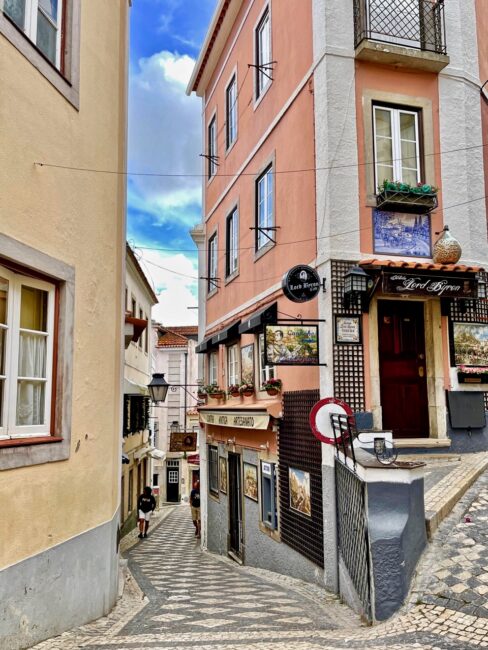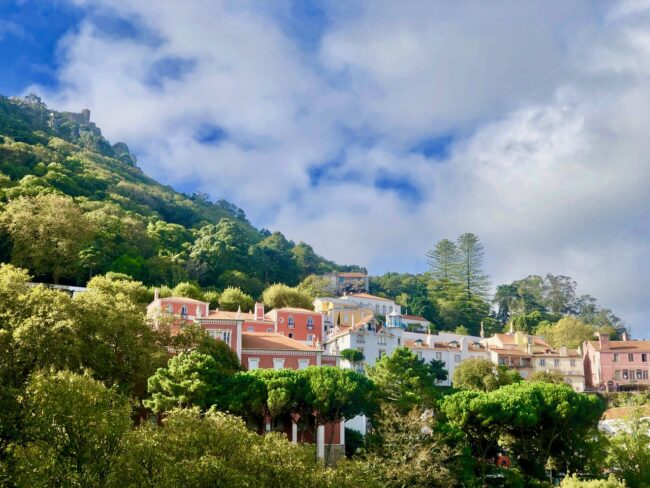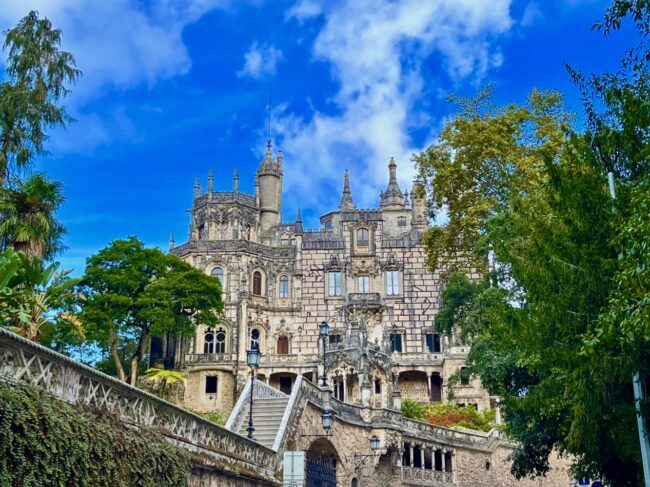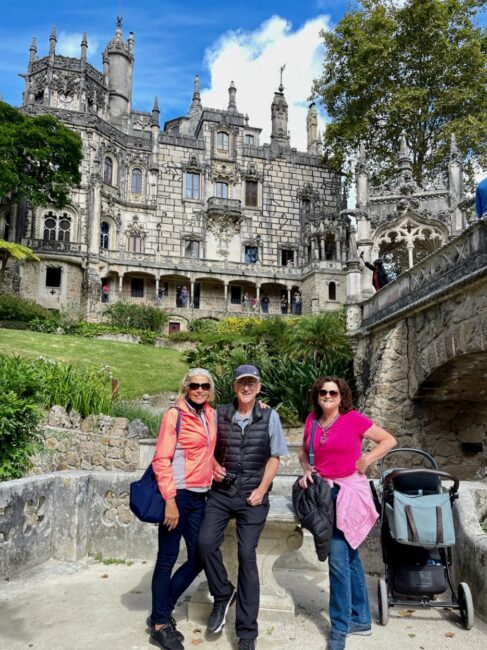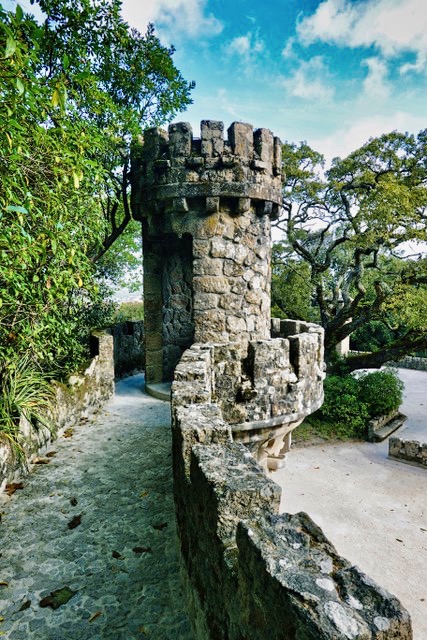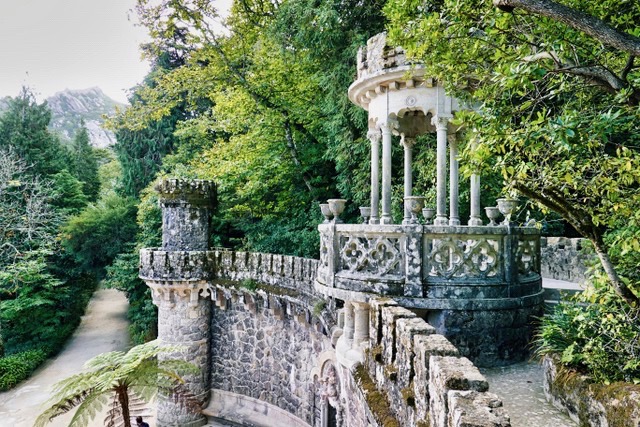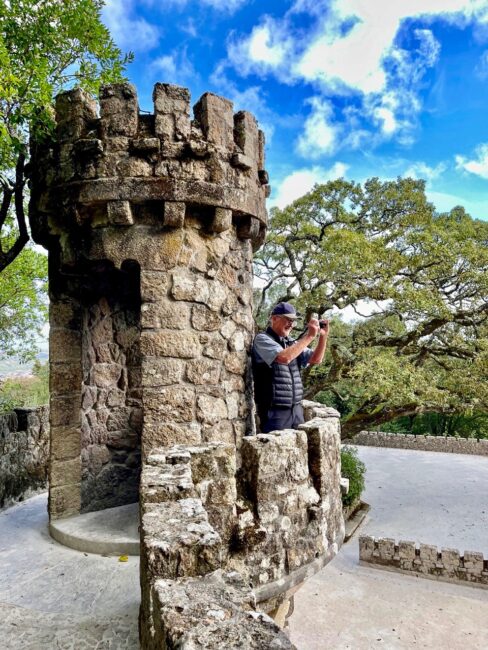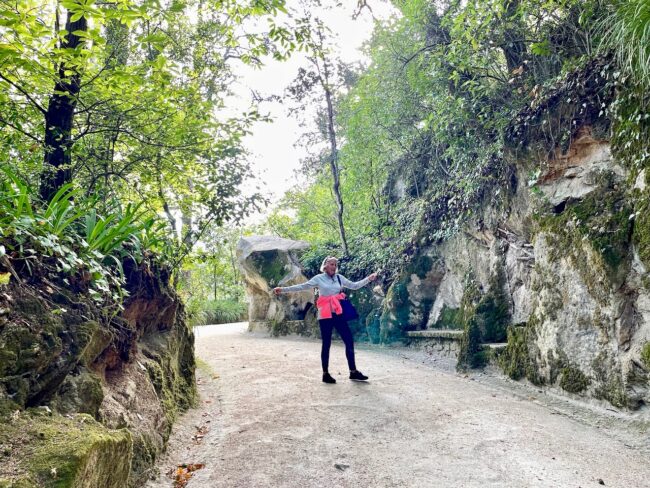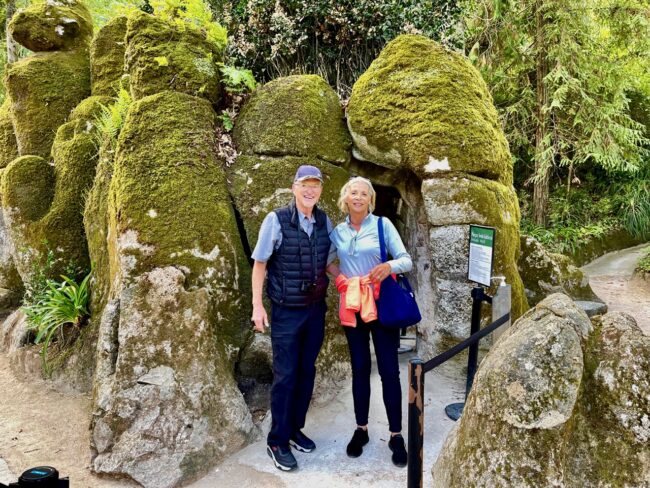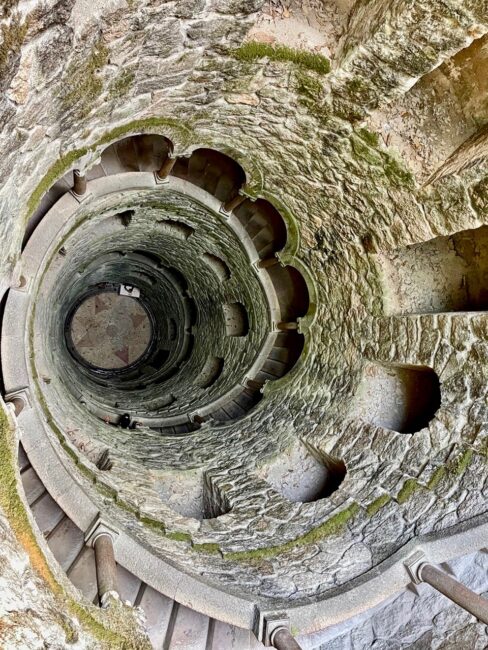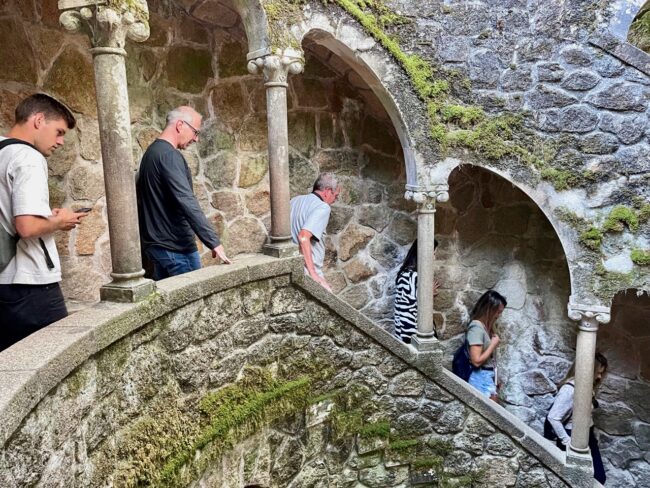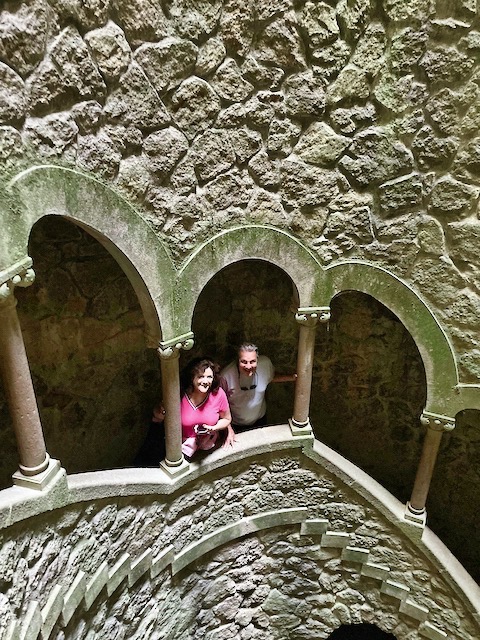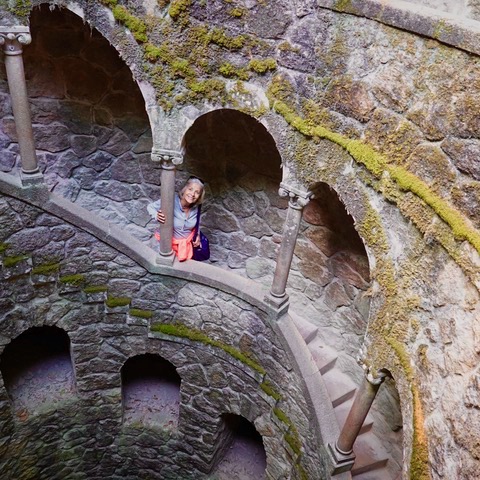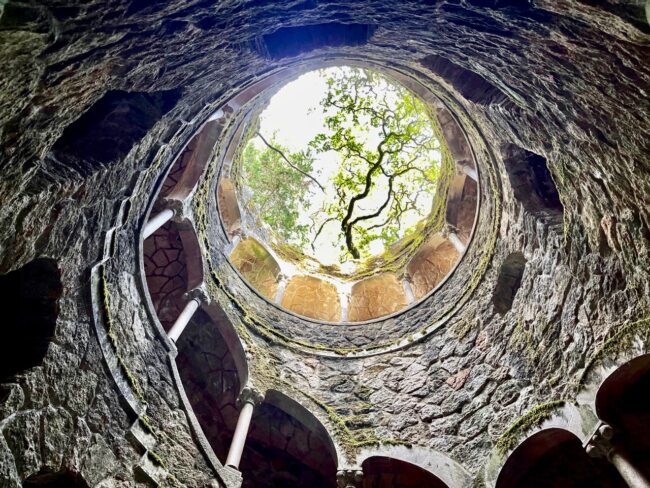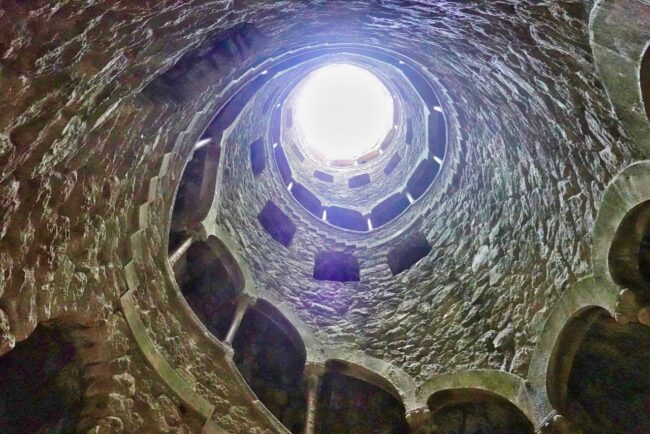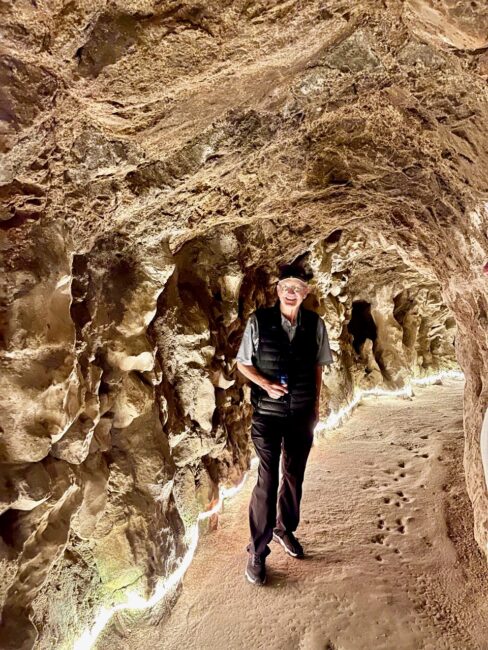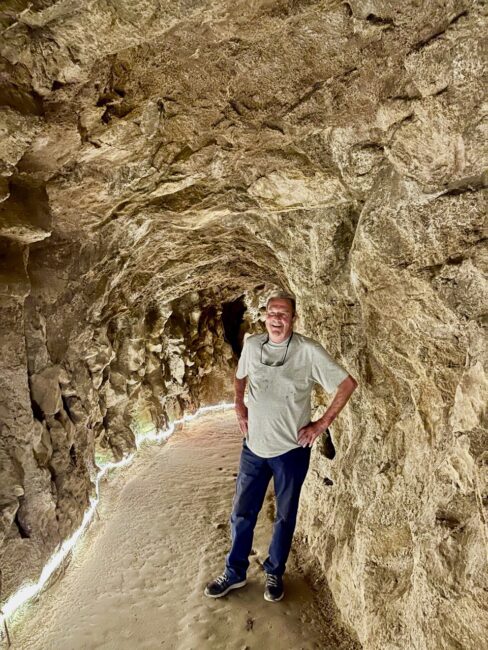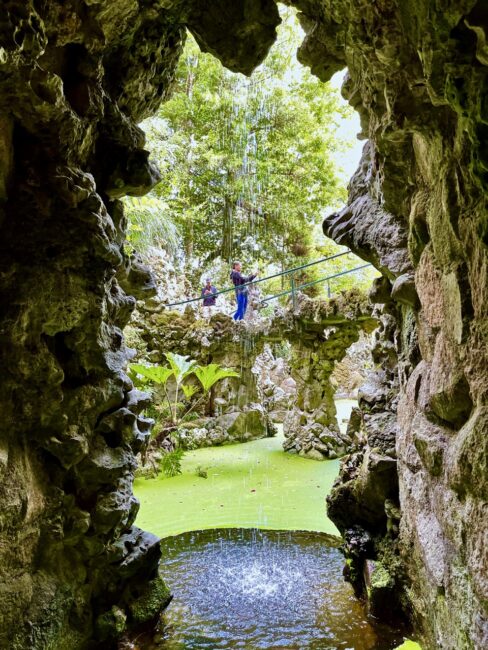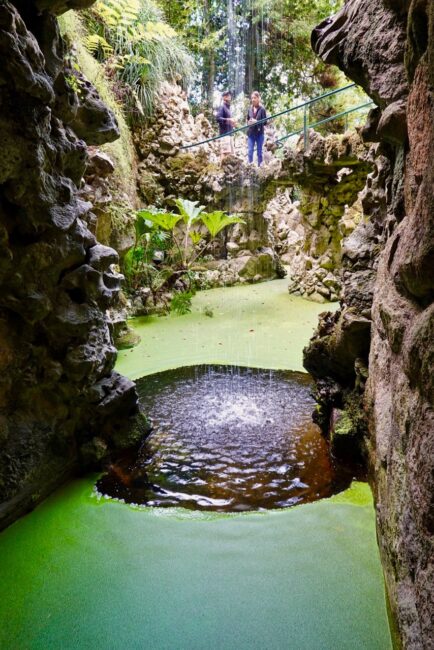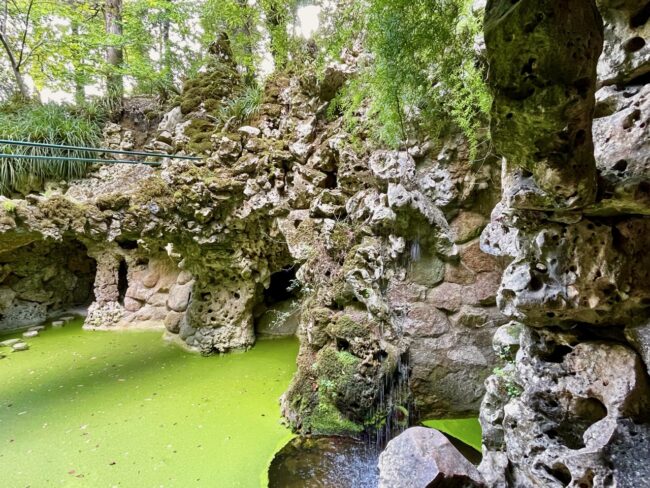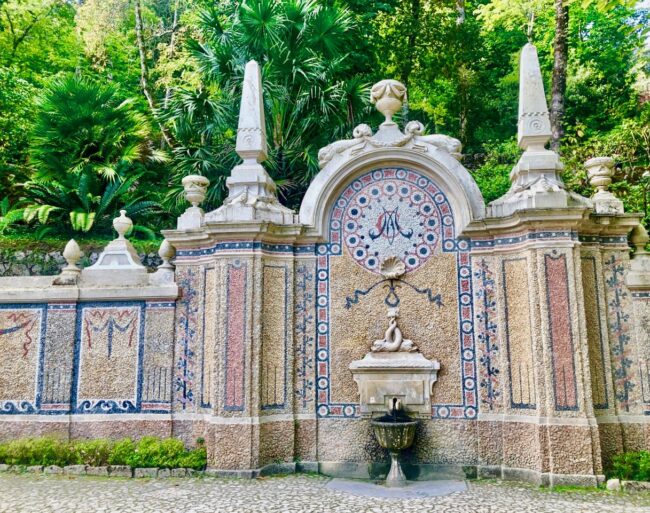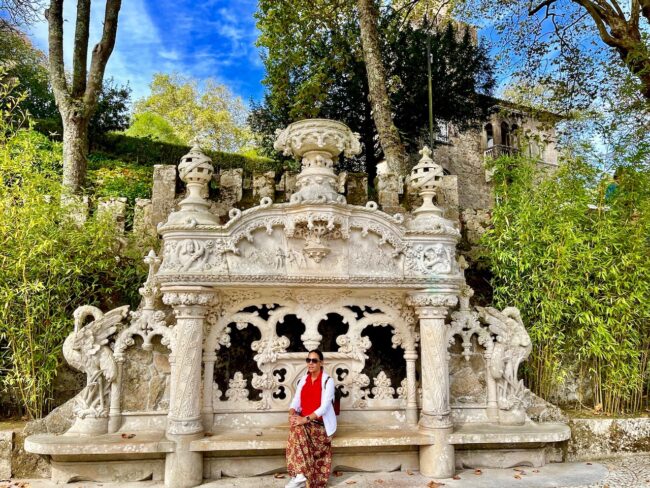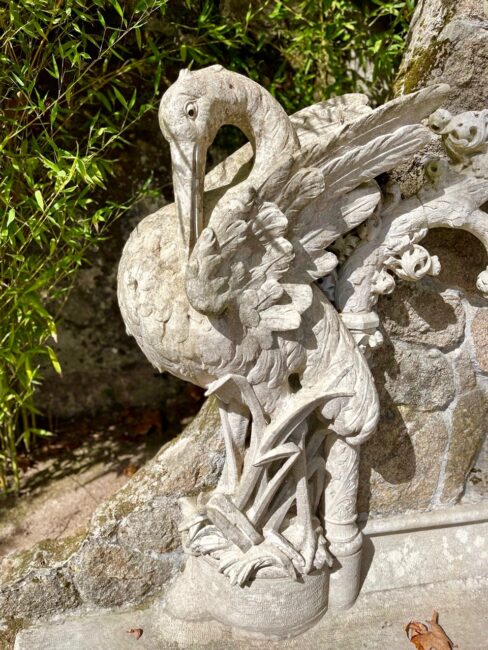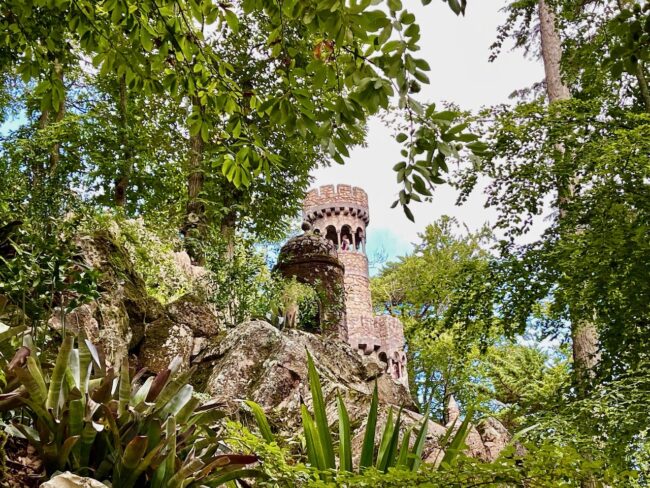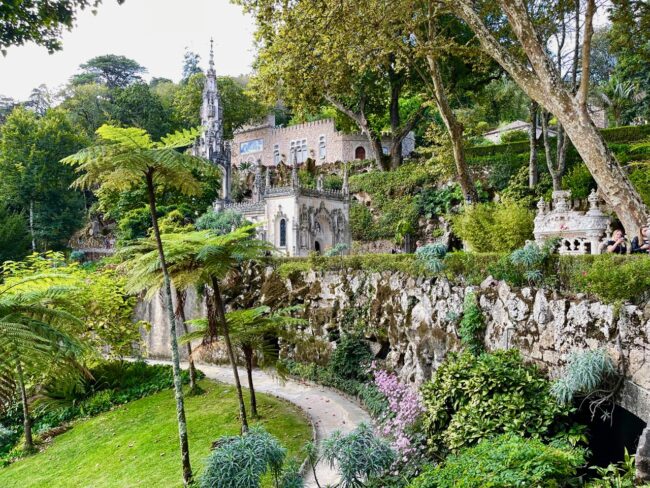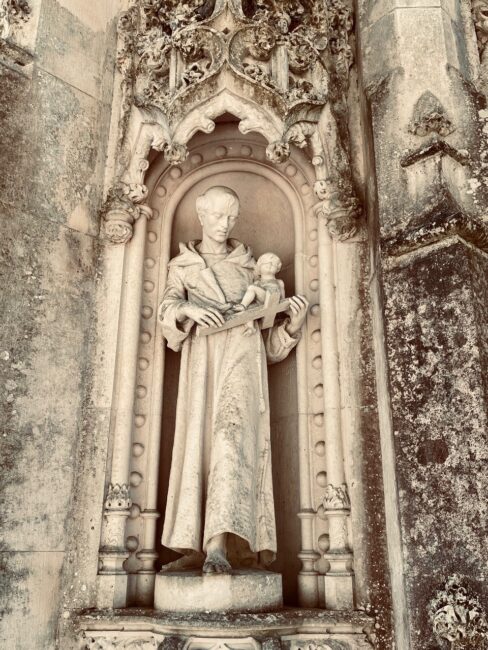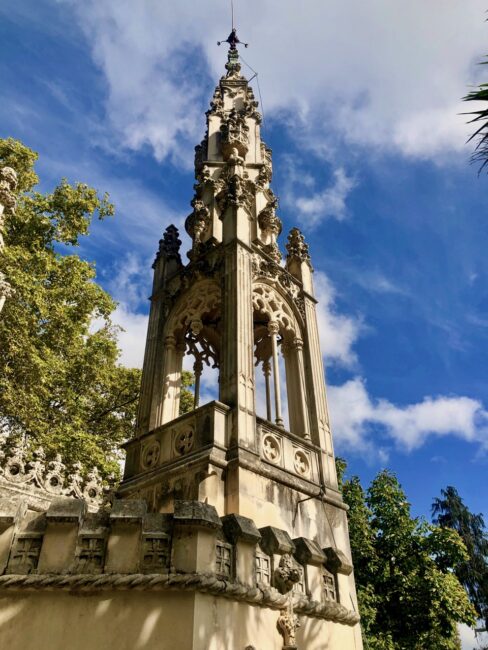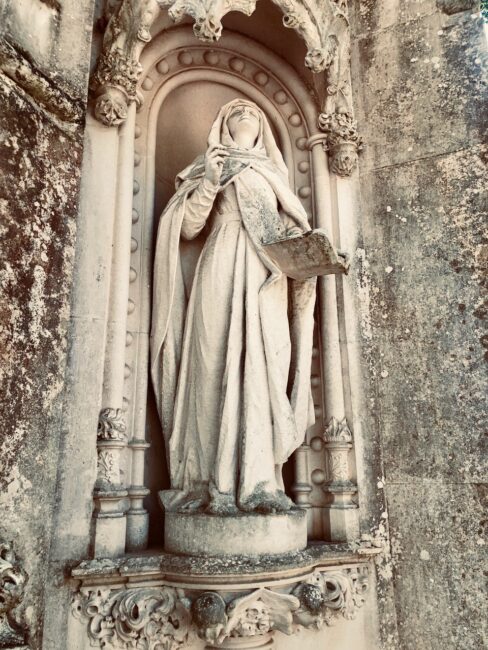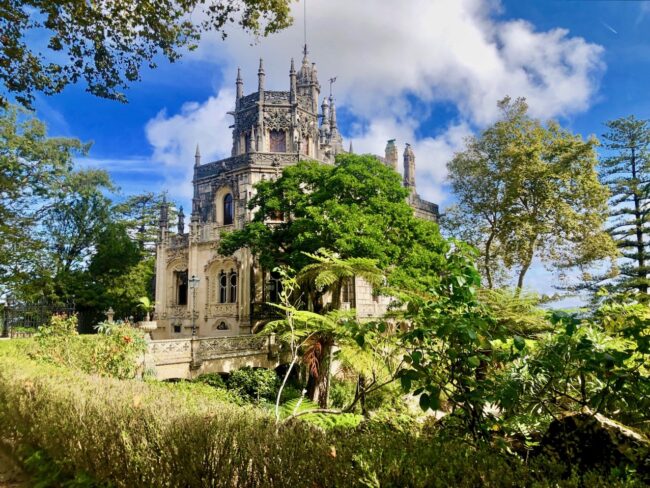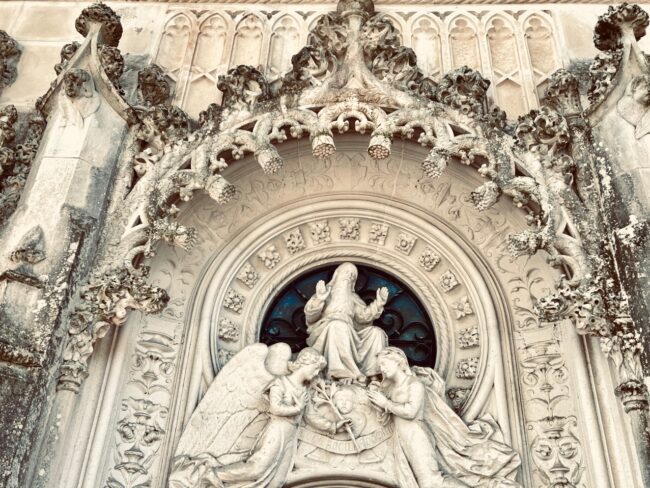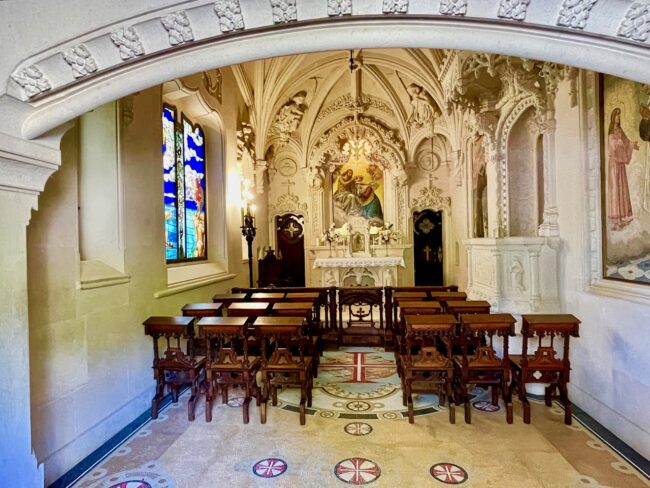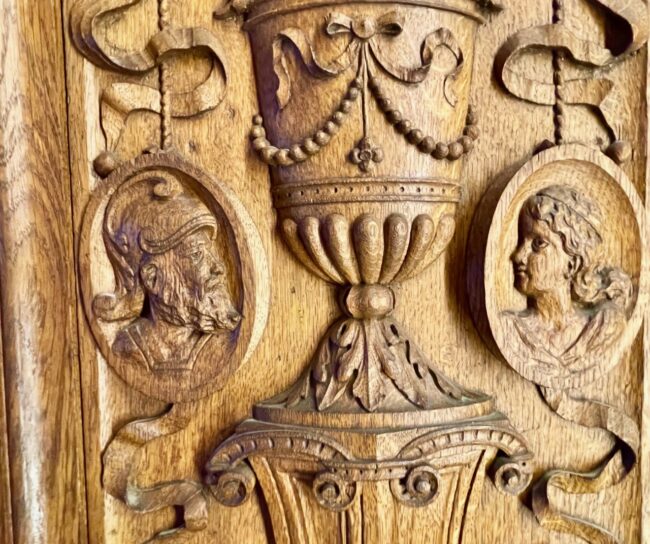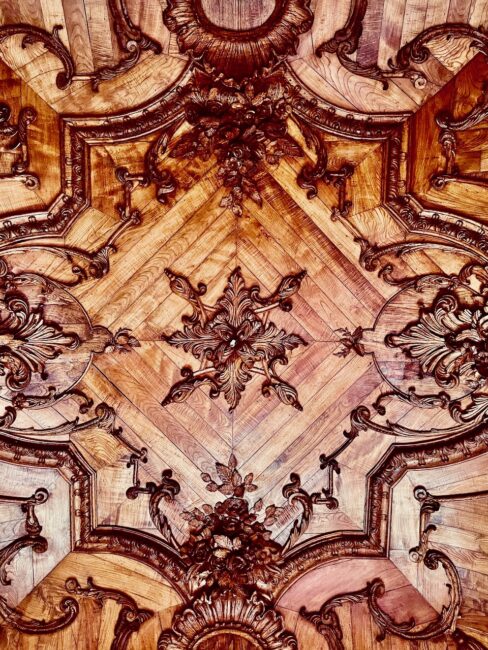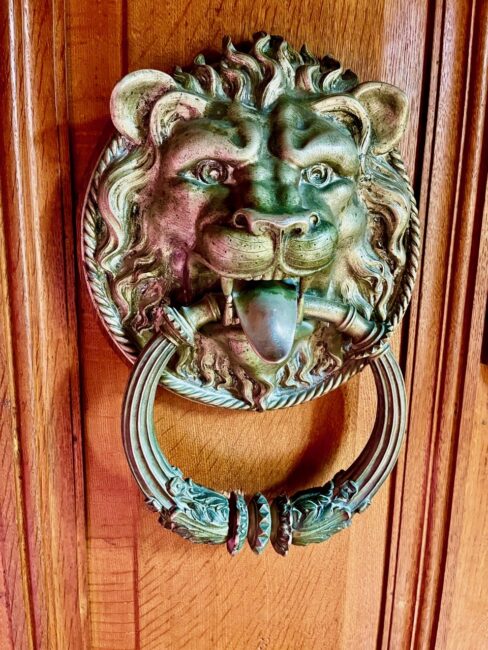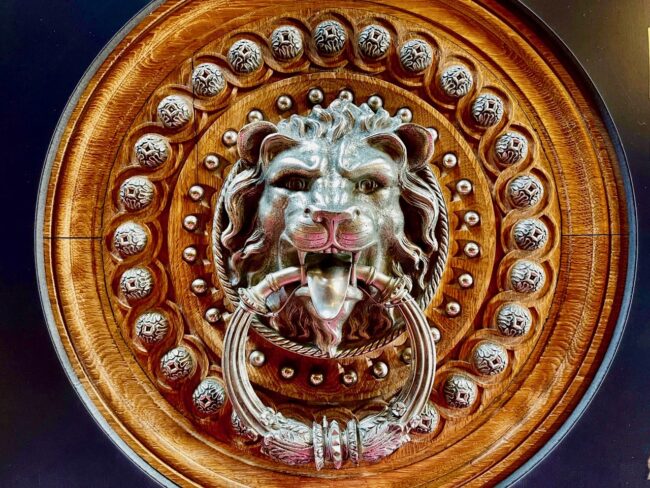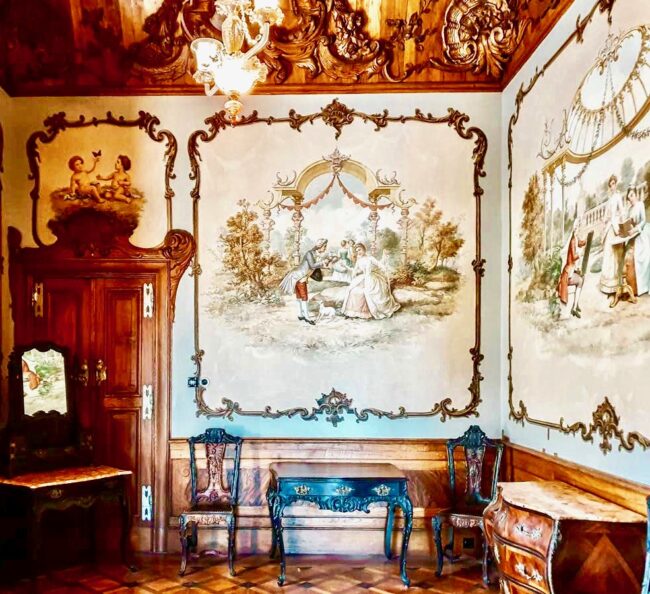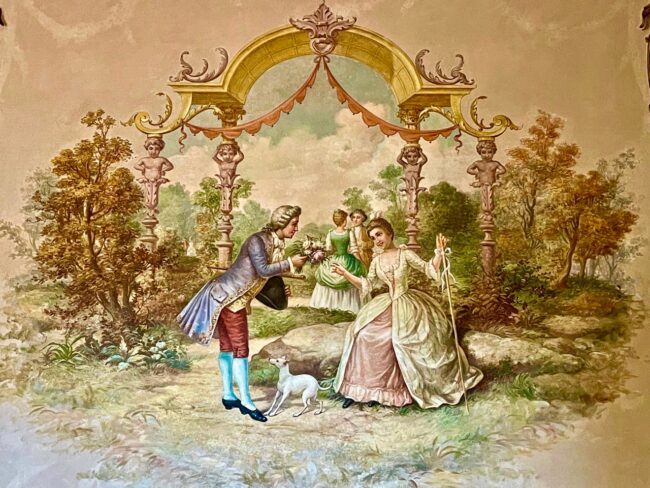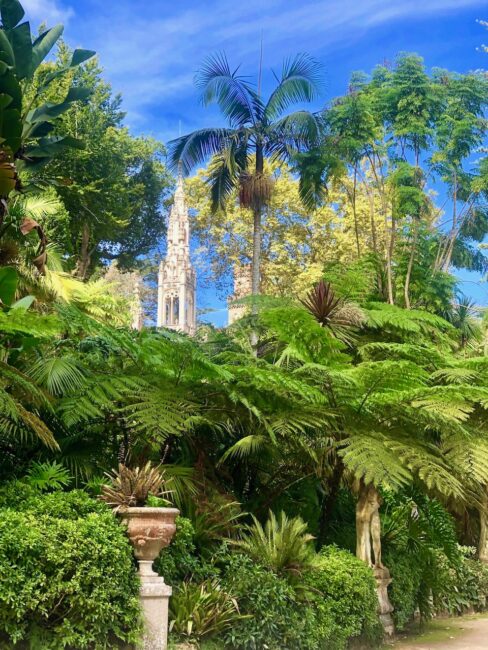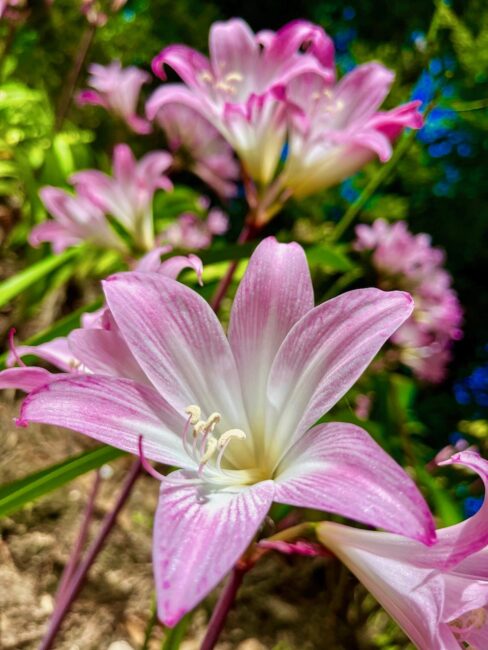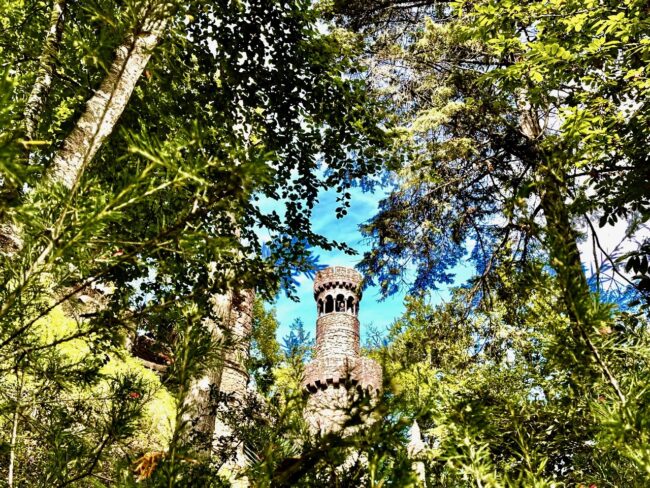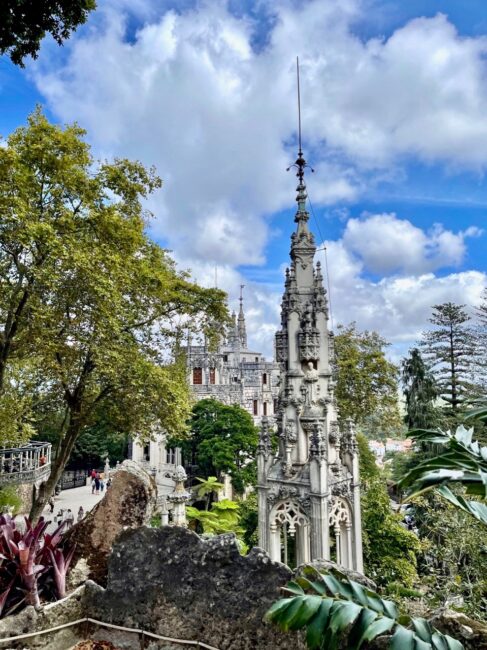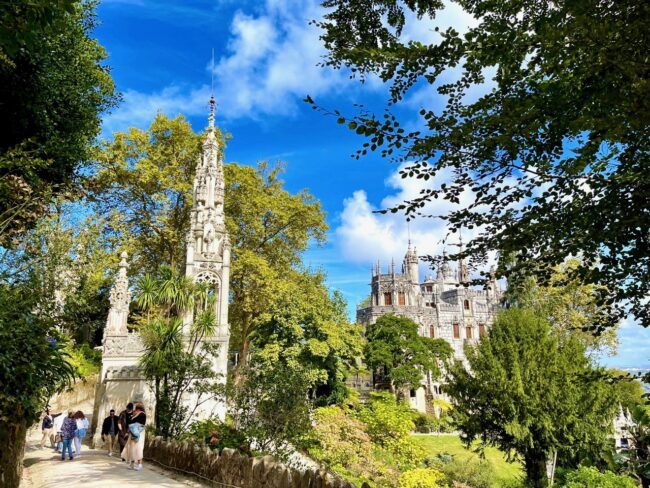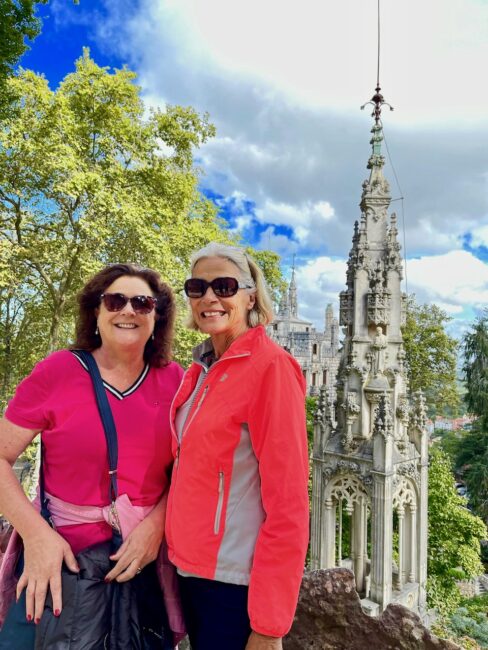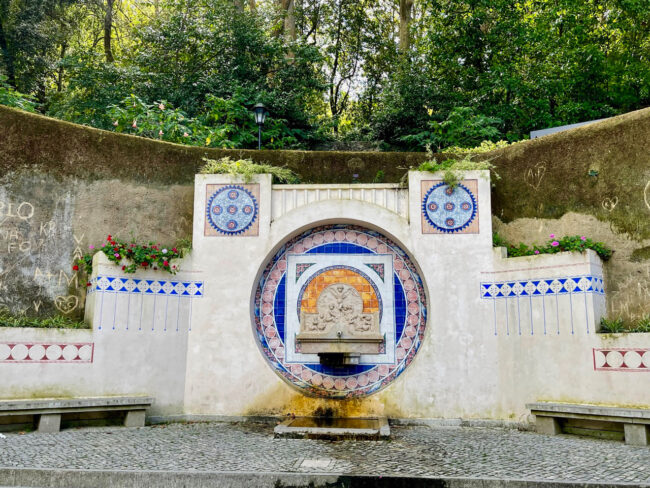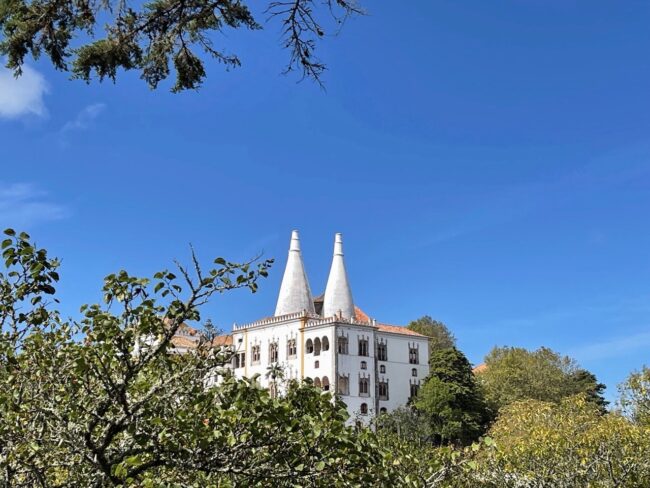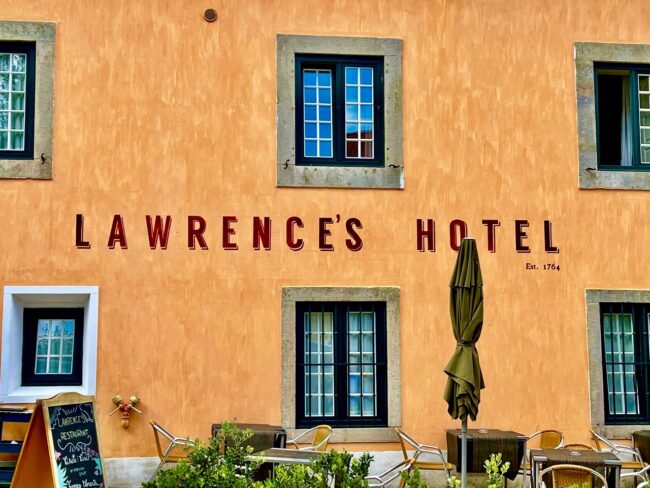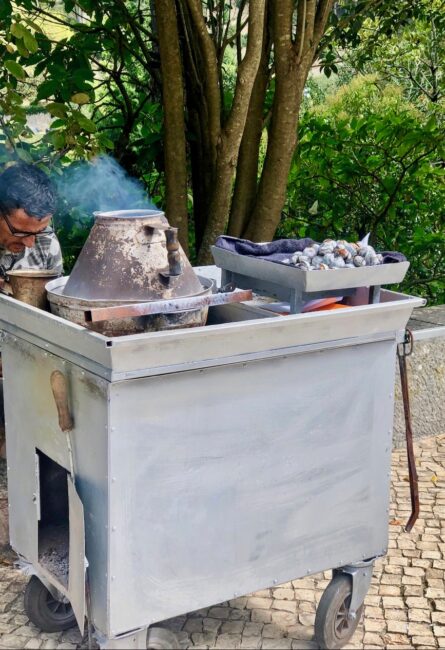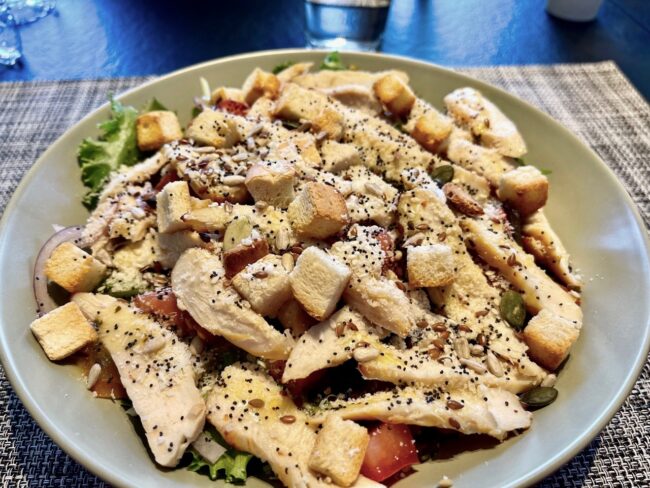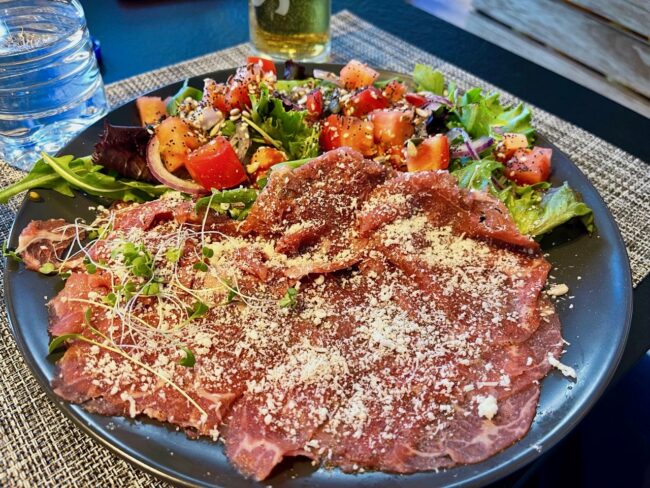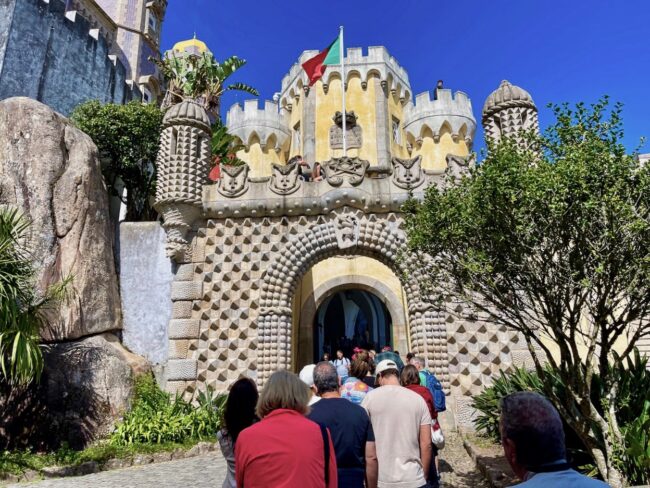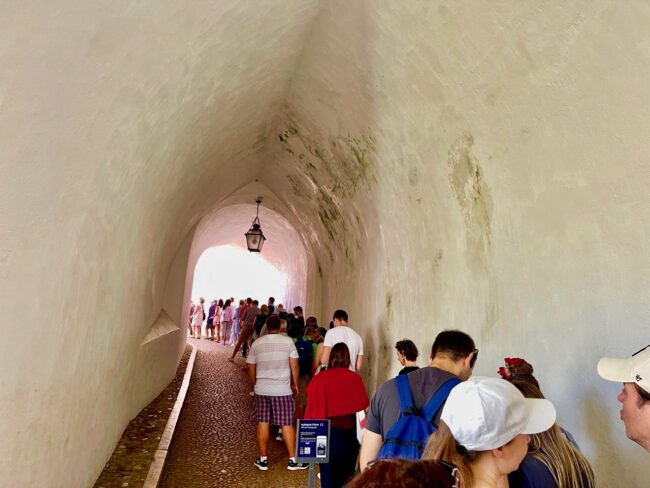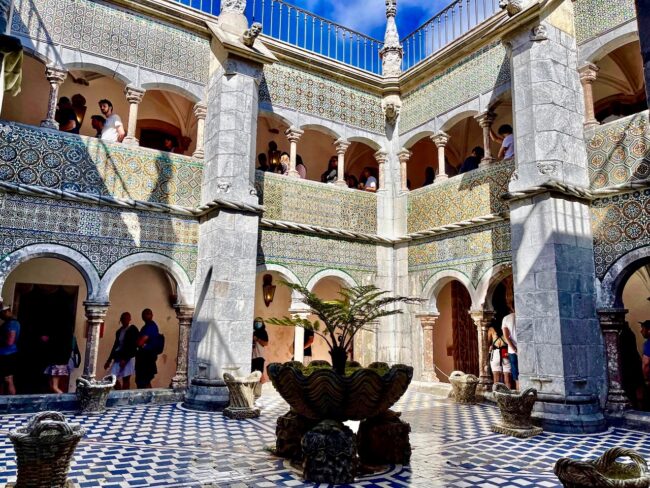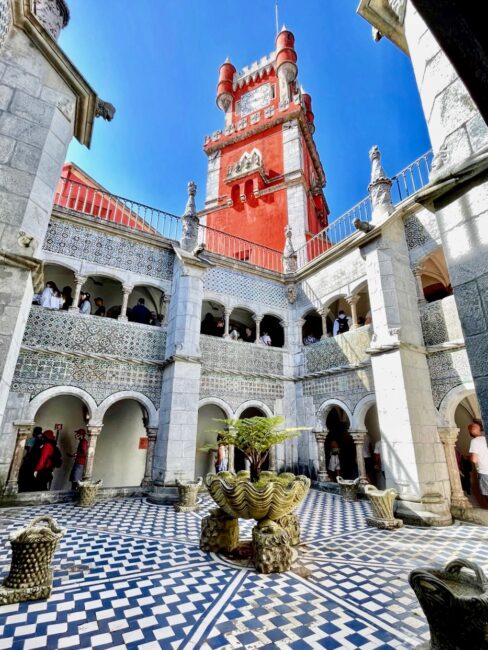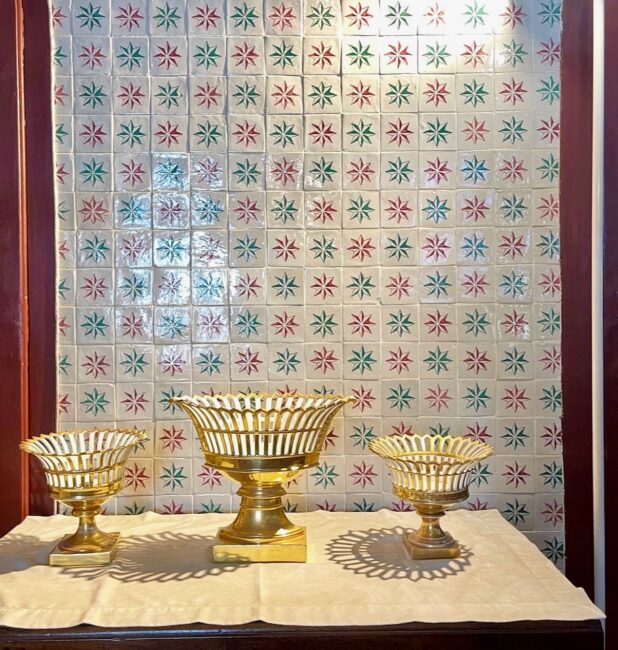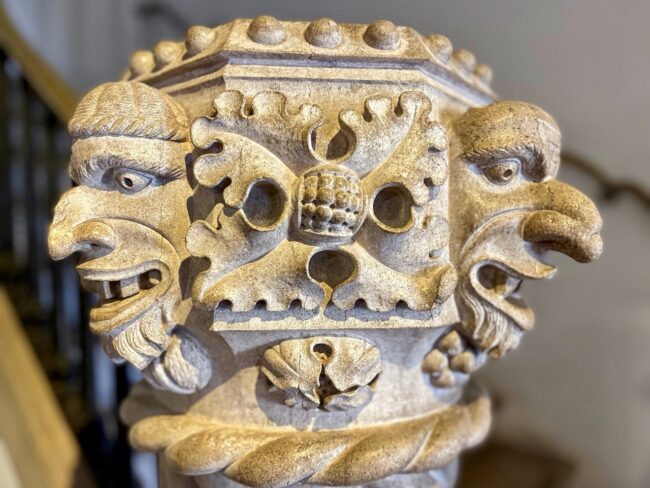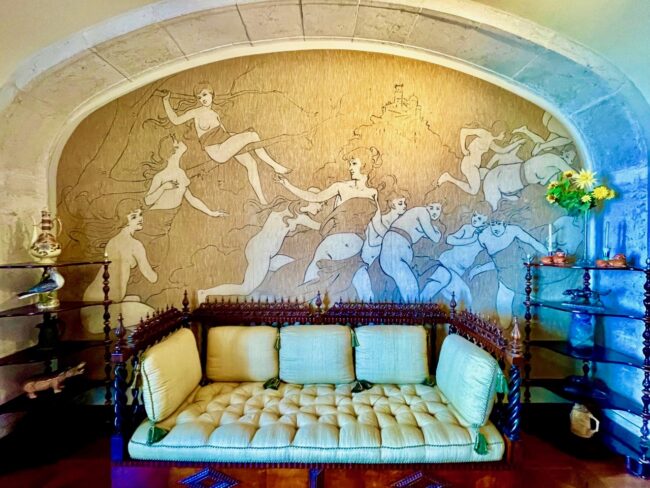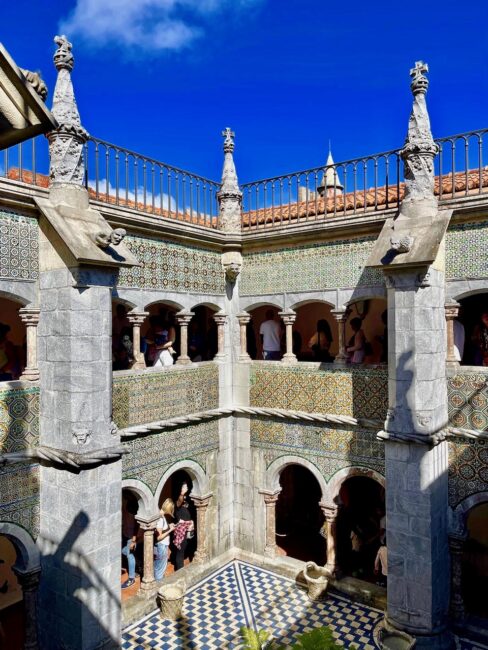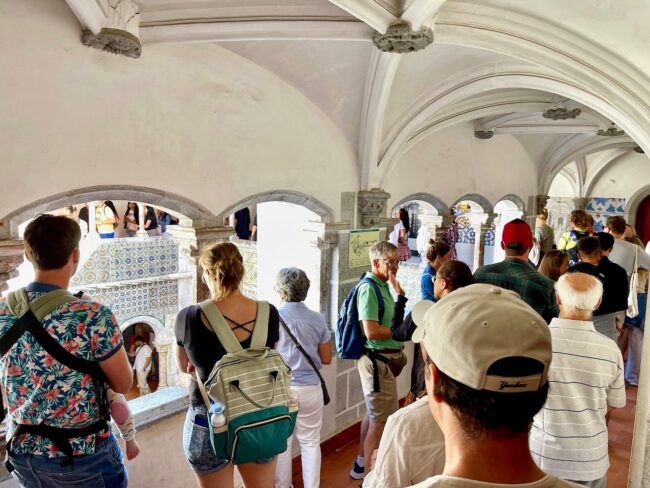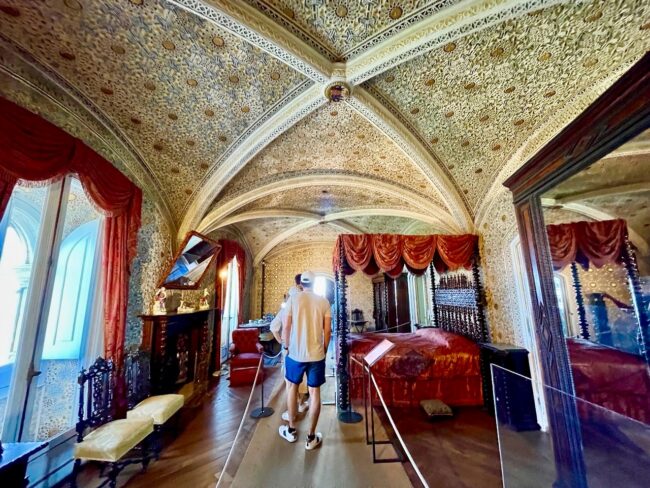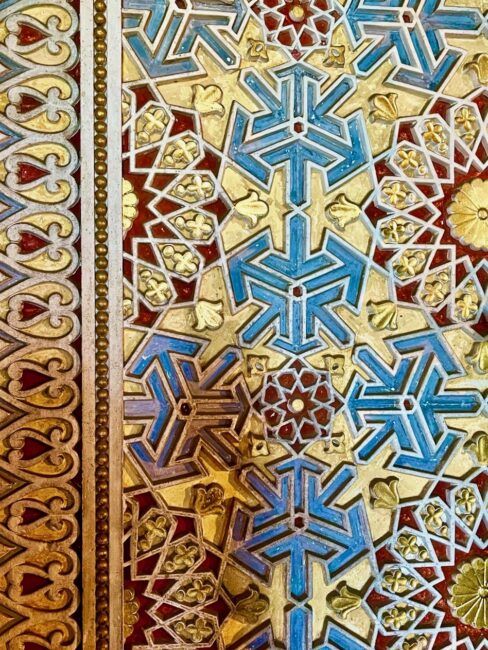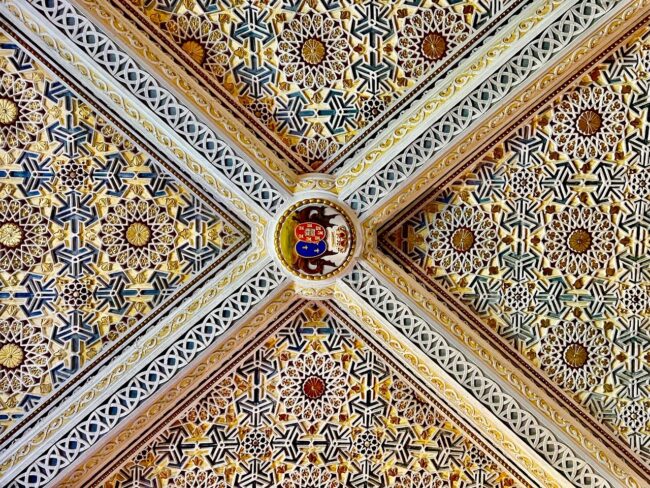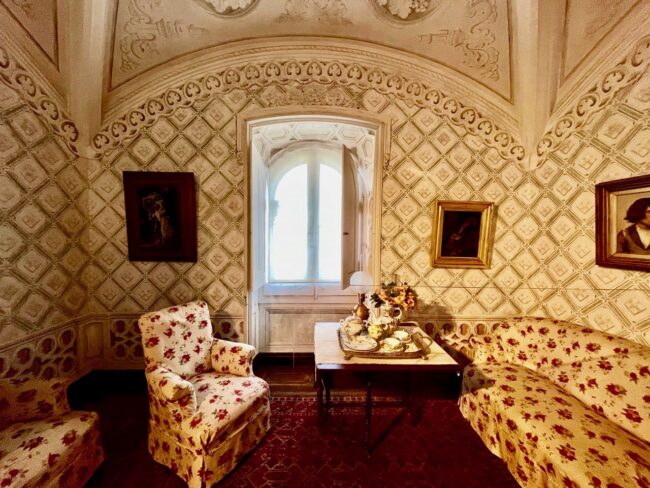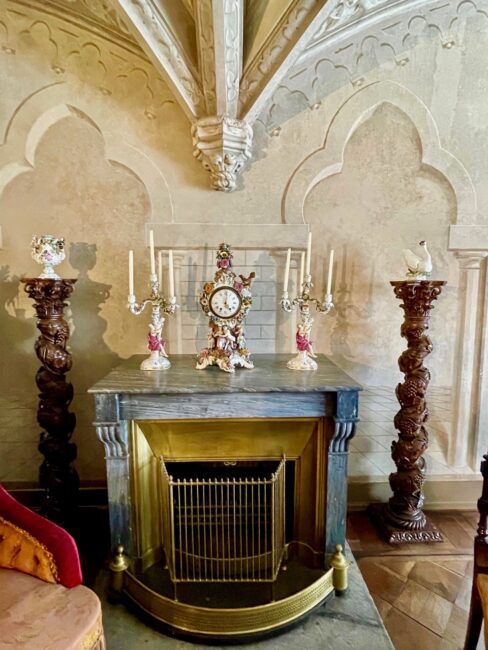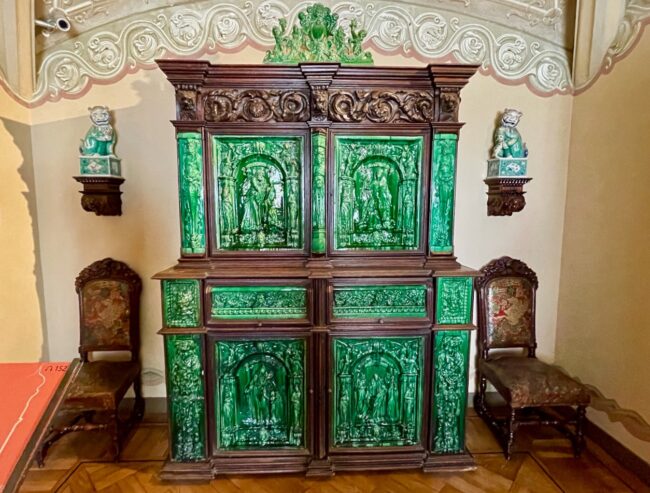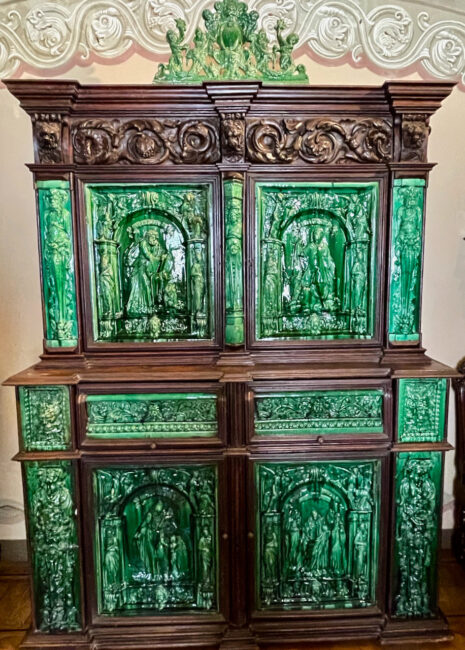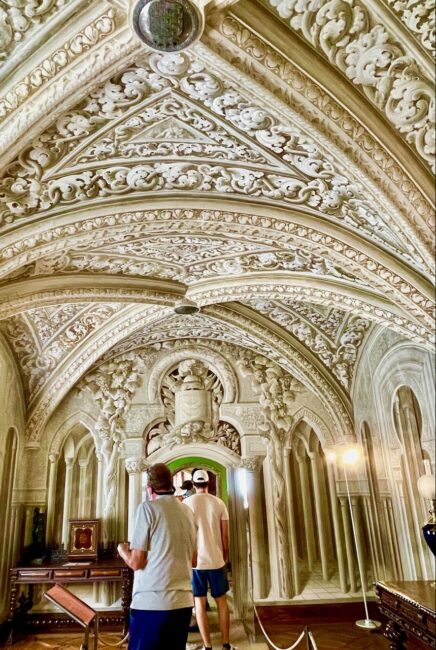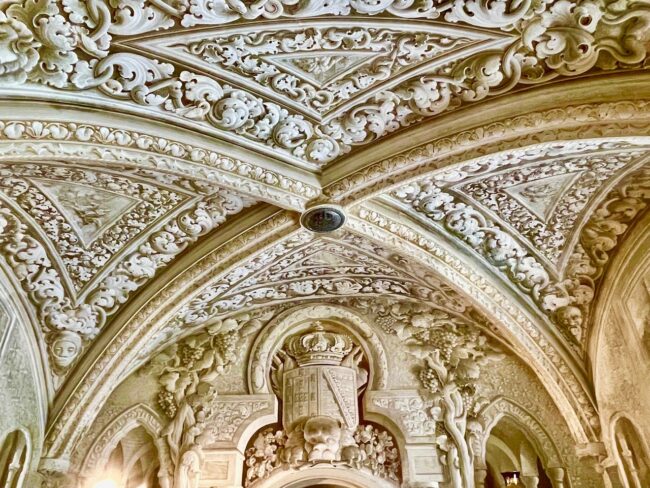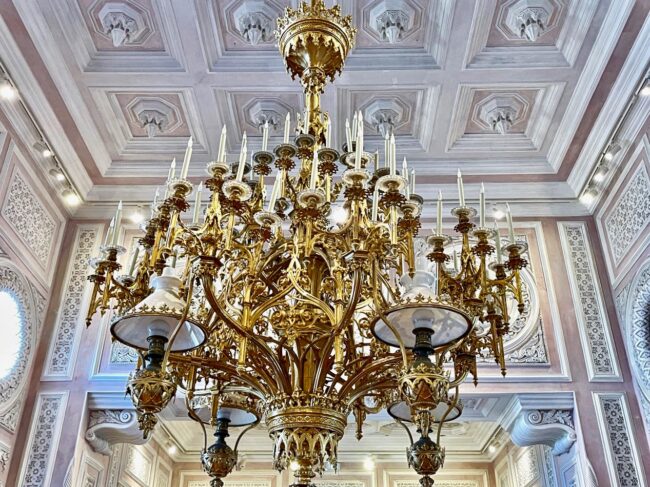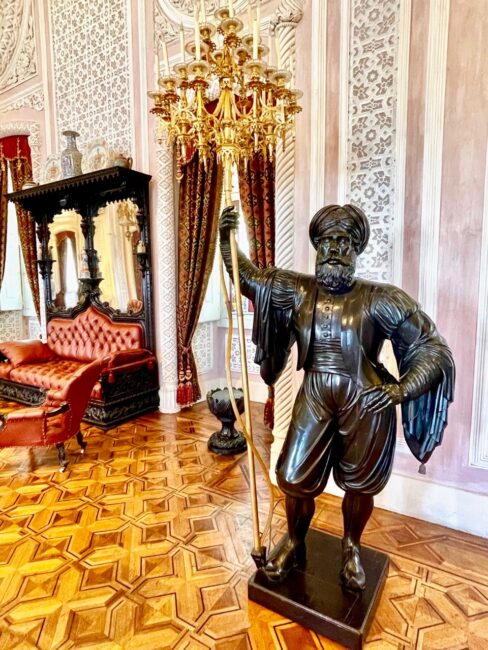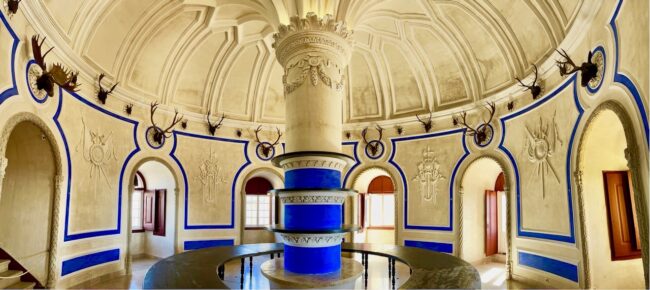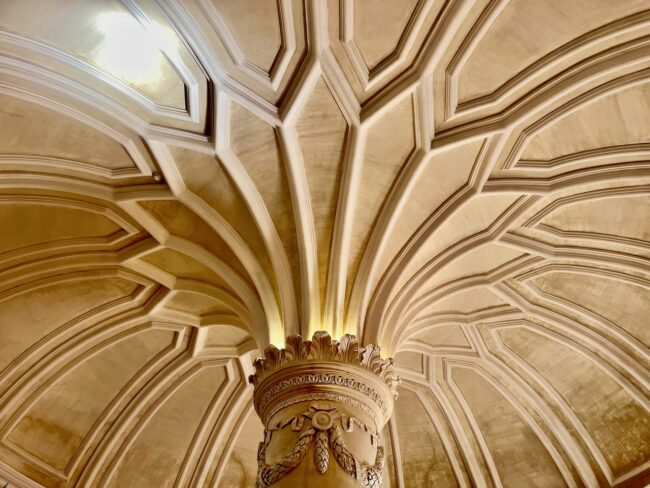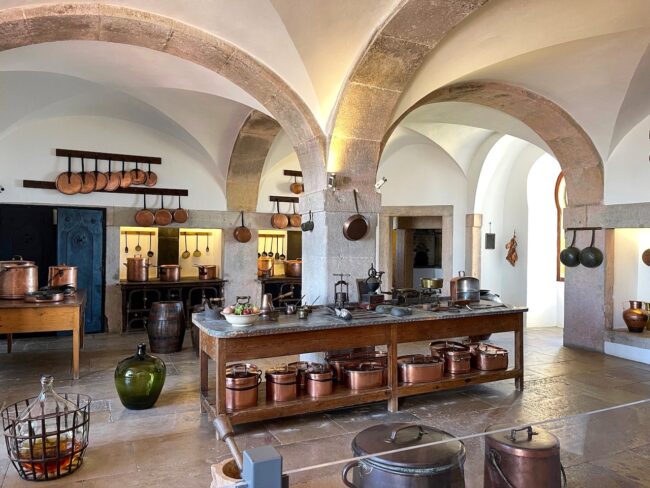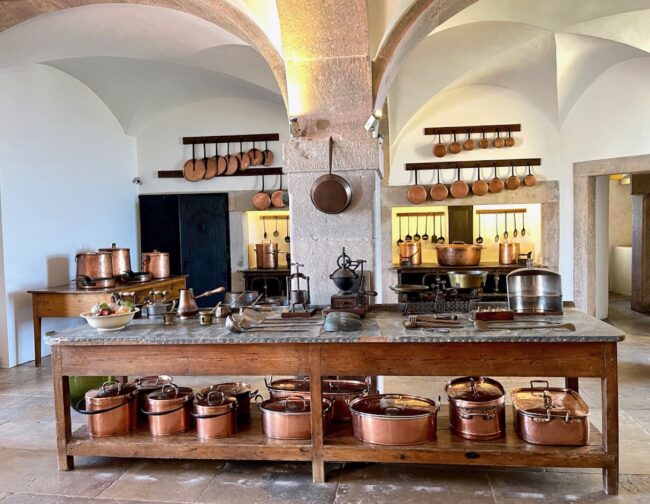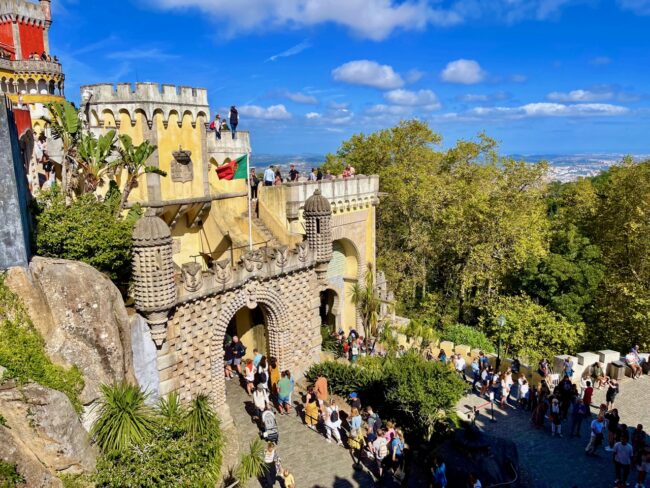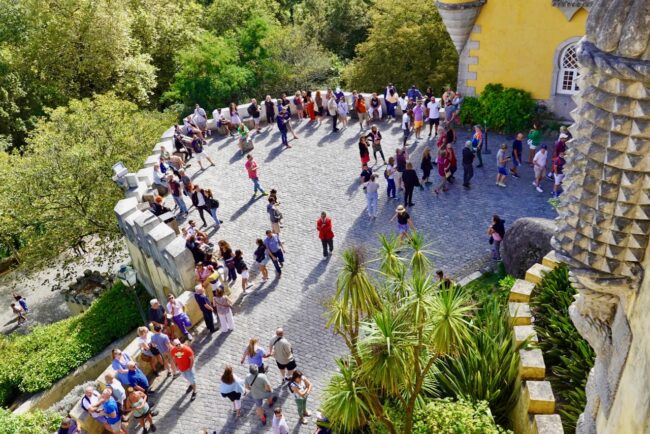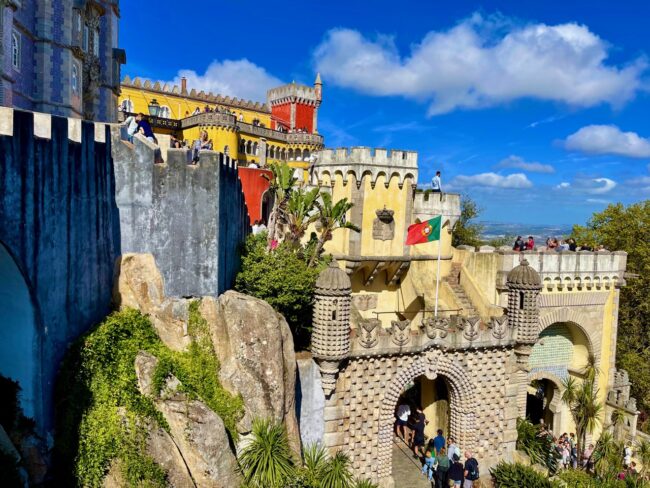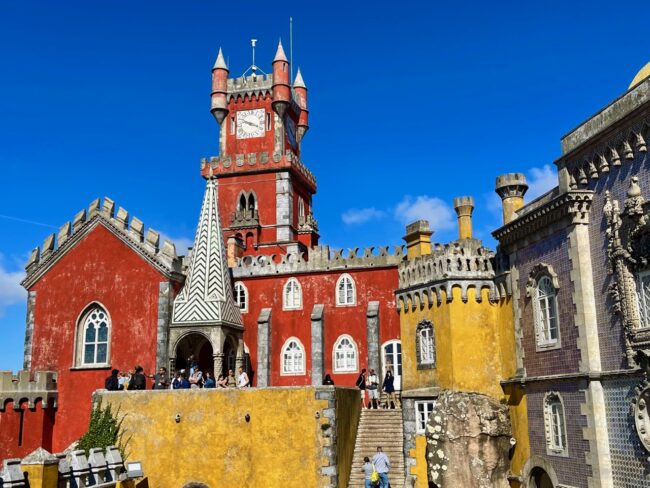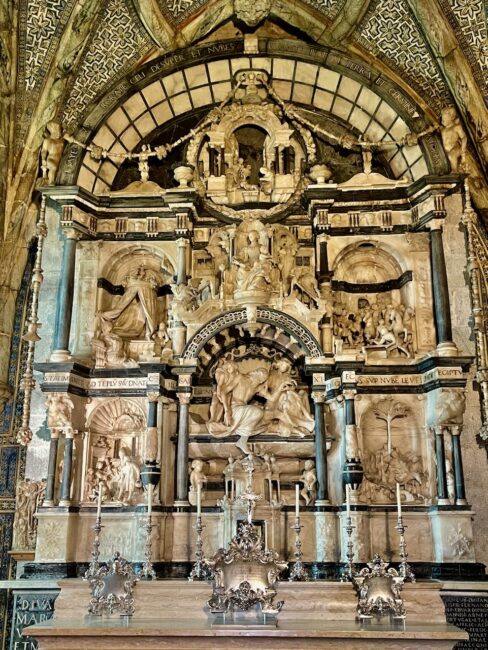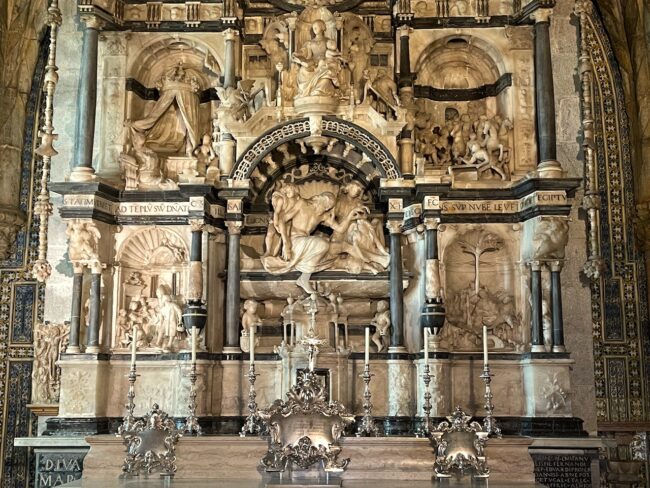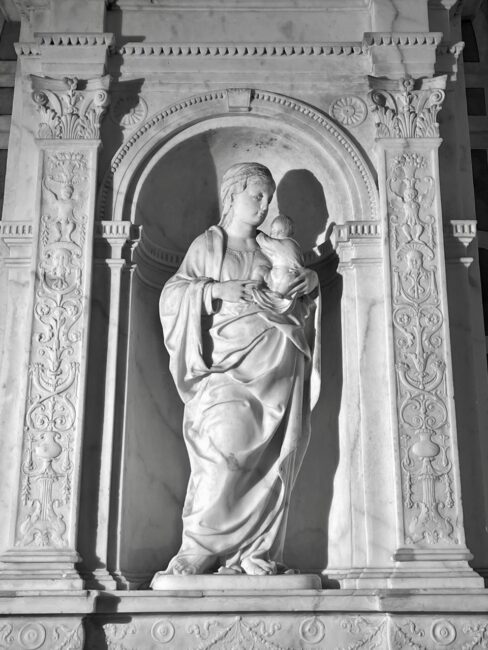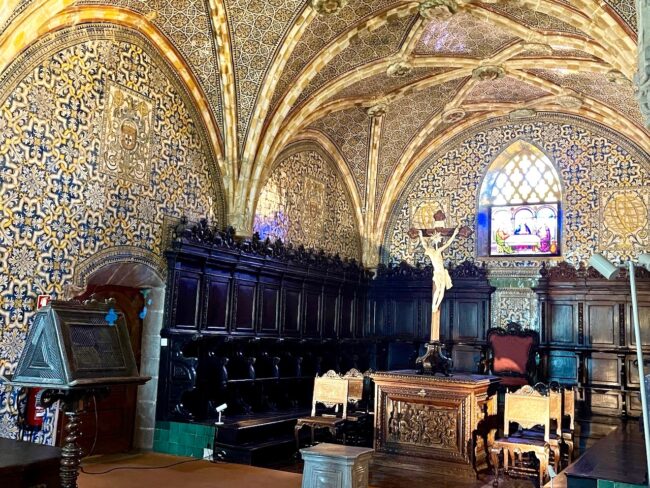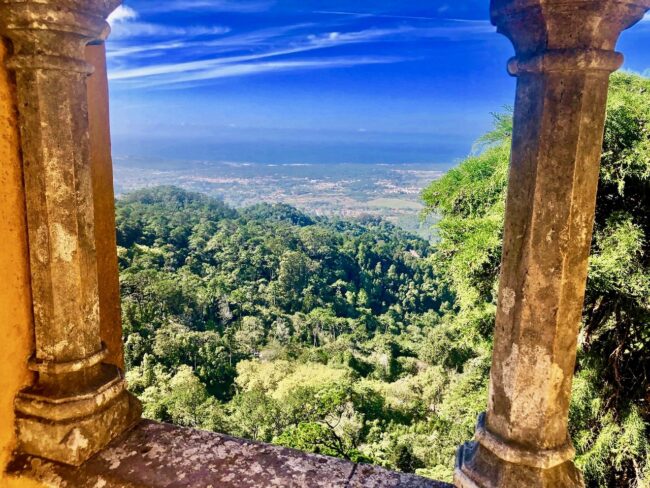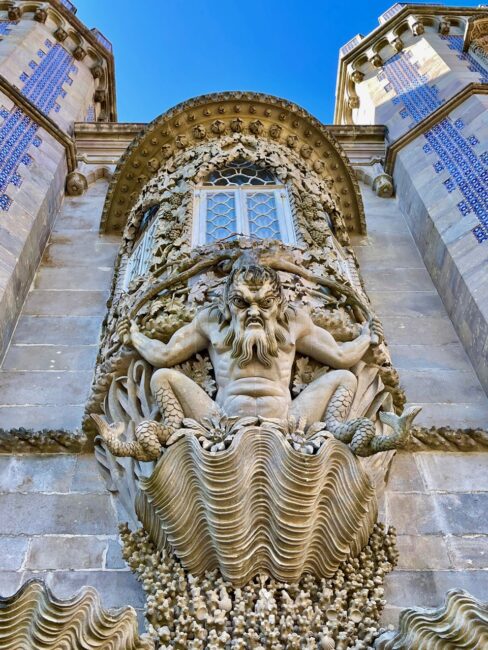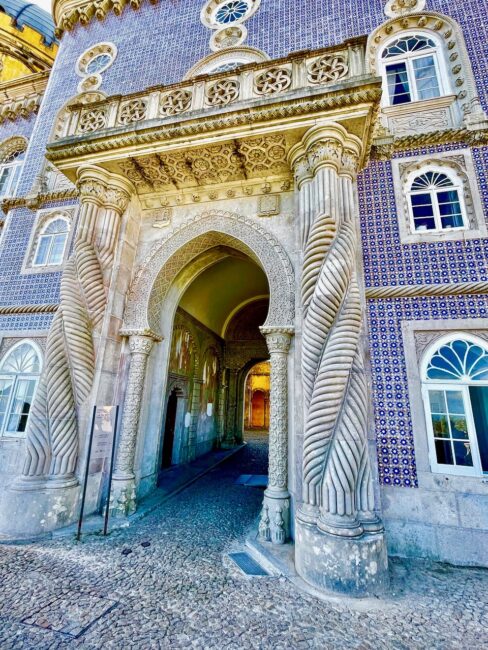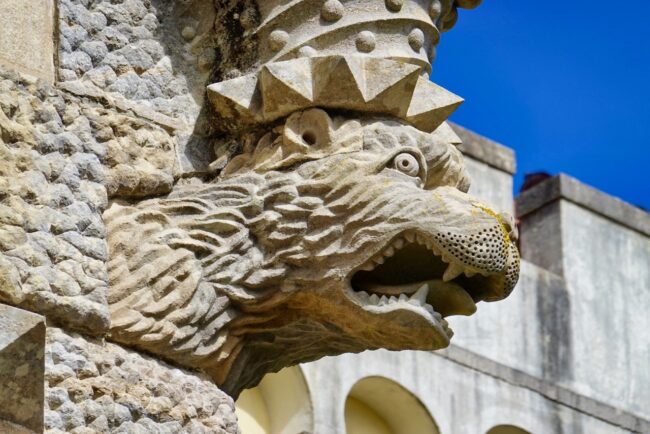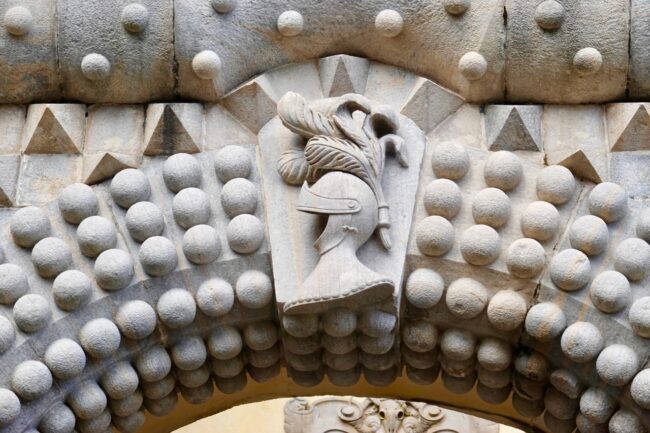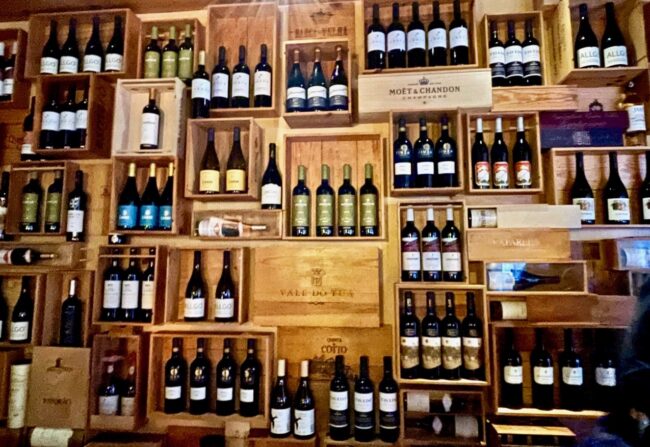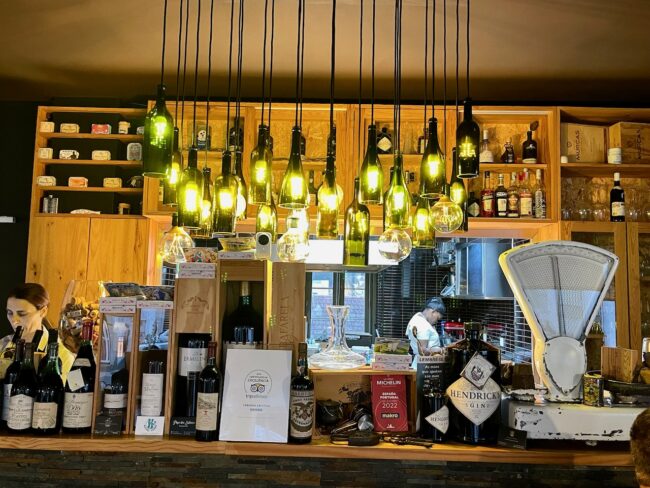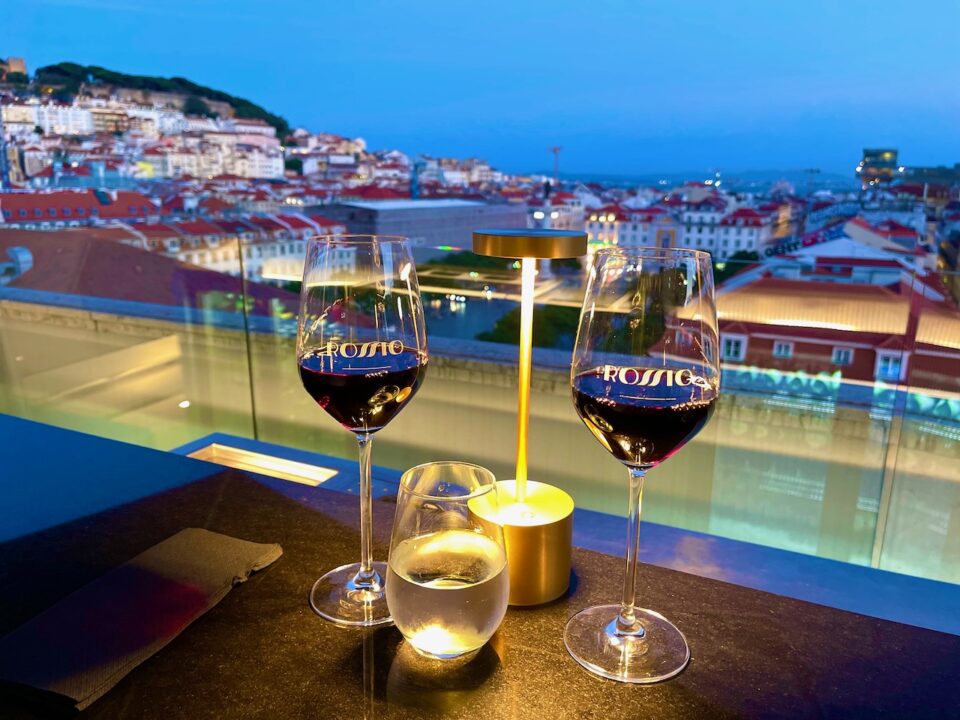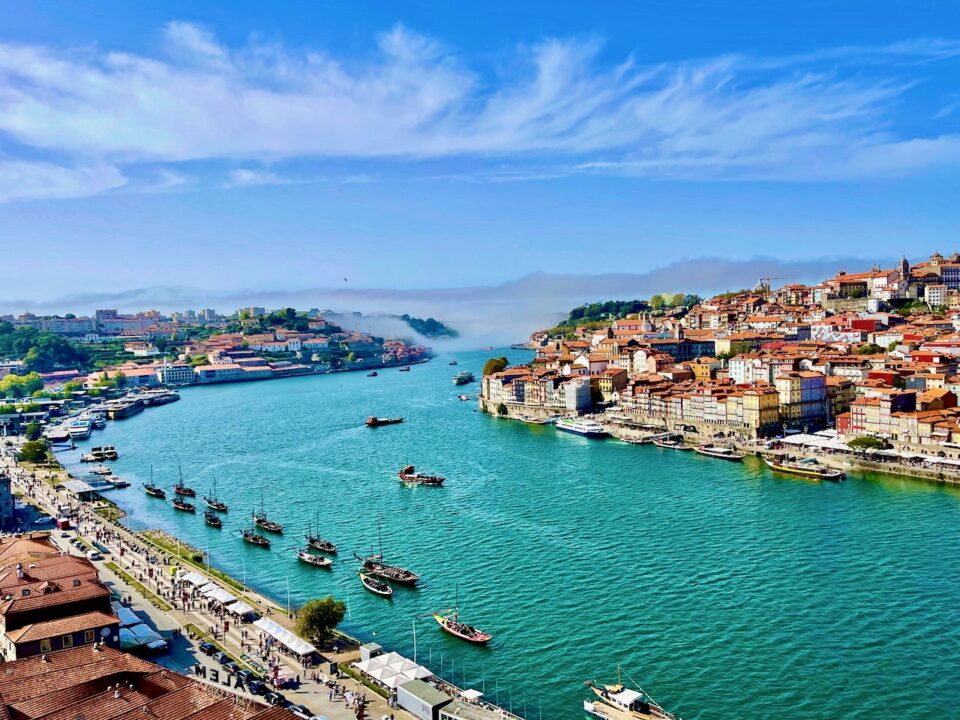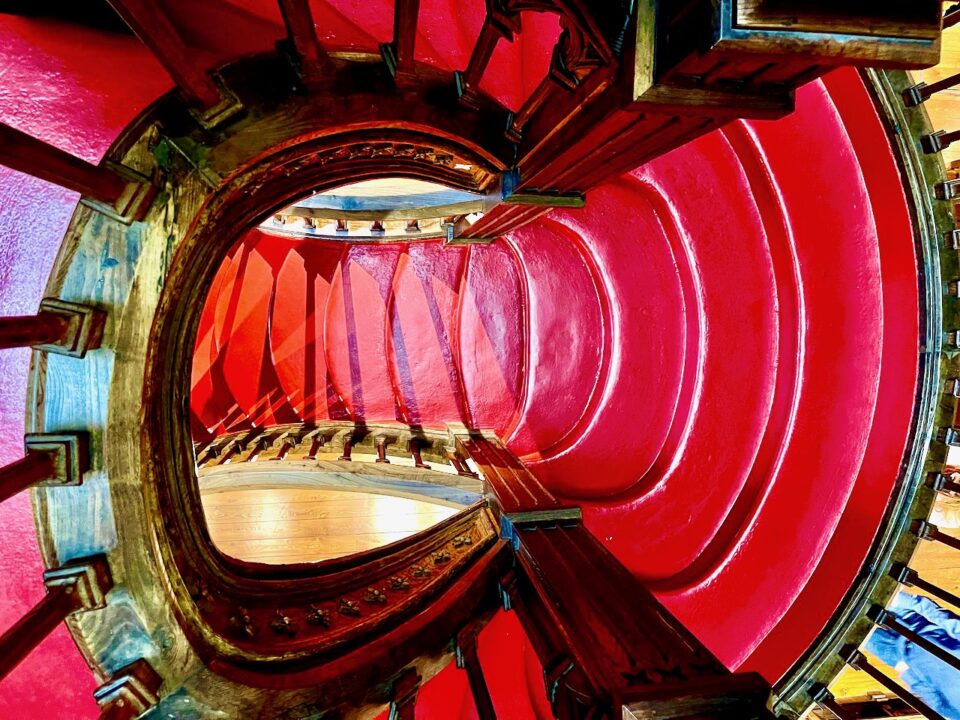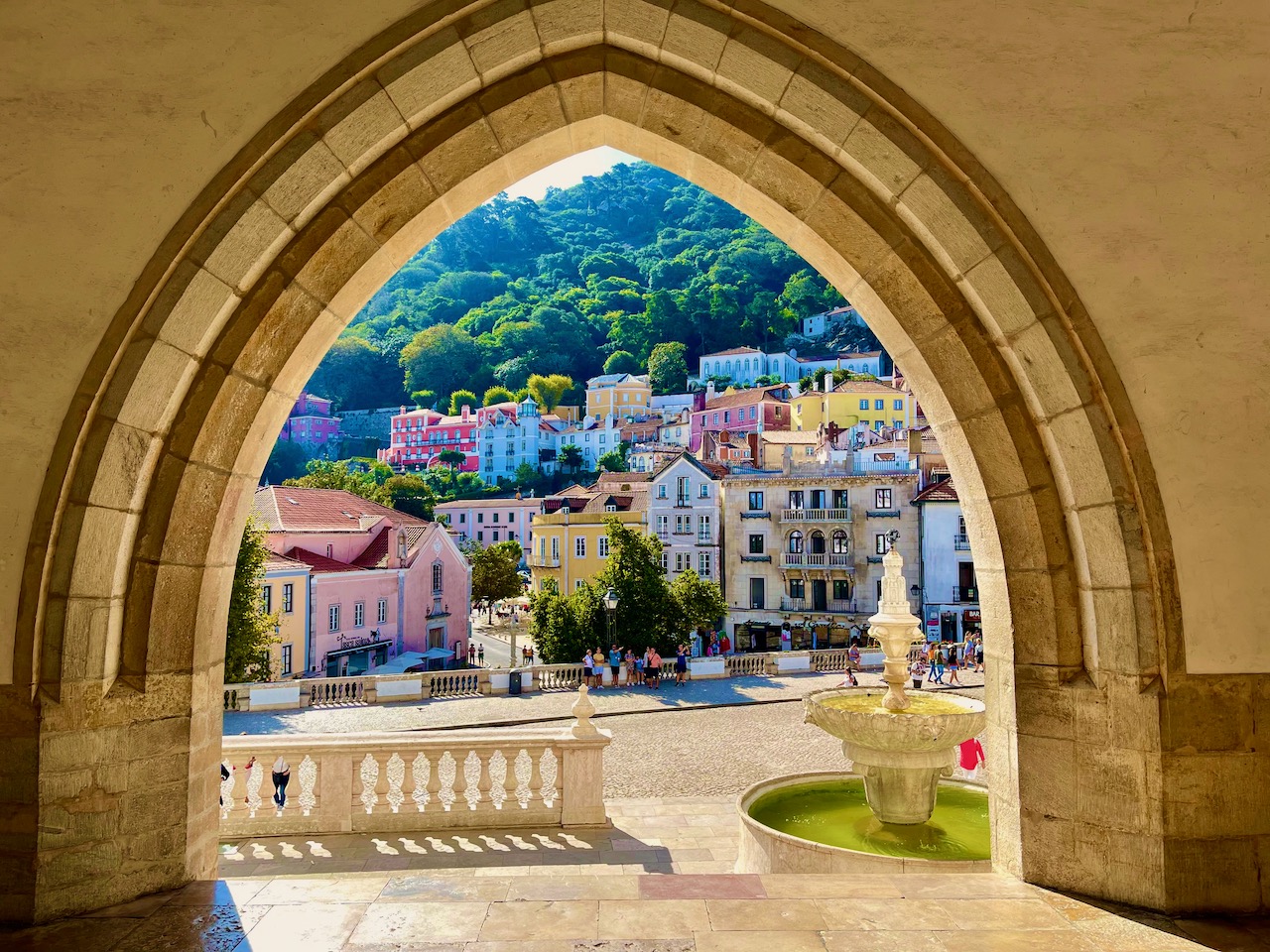
Chapter Seven: Sintra … Colorful City of Palaces
December 29, 2022
Chapter Nine: Magical, Mystical Monserrate
January 14, 2023Falling For Portugal: A Mai Tai Tom “Trip” Report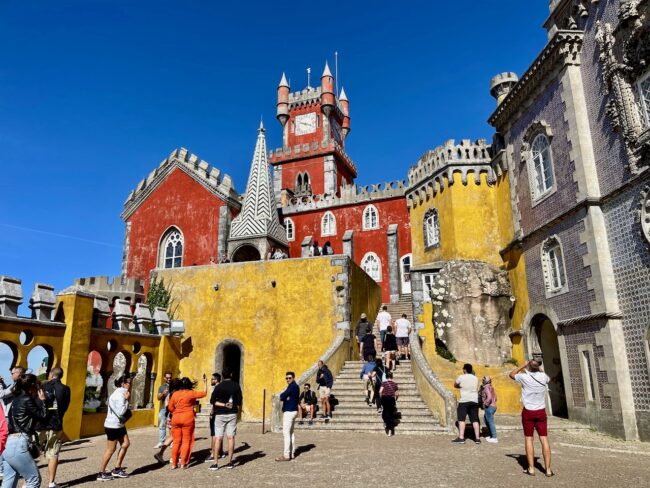
Chapter Eight: Quinta da Regaleira and Palácio da Pena
Day Eight: Early Birds, All’s Well, Dante’s Inferno, More Manini, Crowd Control, Blown Away (Literally), The Best €20 We Have Ever Spent and A Neighborhood Gem
Since I had booked and rebooked this trip three times since 2019, I had forgotten one minor detail involving our stay at Chalet Saudade Vintage Guest House. I had originally booked the two smaller rooms in 2019, because they were all that were left. About a month before leaving I remembered this error and attempted to upgrade. Unfortunately, they had no more larger rooms, but as it turned out the rooms were perfectly fine with a scenic garden view. Plus, it’s not like we spend a lot of time in our room.
Breakfast is included at Chalet Saudade, but it’s not located on the property. It’s less than a 5-minute walk up some nearby stairs to the Café Saudade, owned by the same people. We had a tasty breakfast and hiked to the Quinta da Regaleira, a UNESCO World Heritage site. We got there a little before they opened at 10 a.m.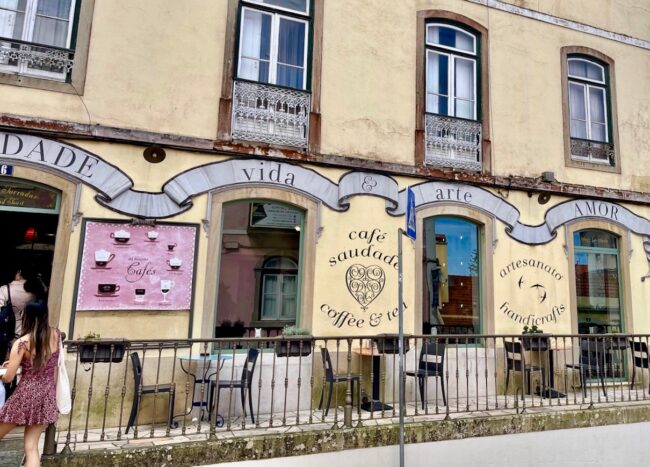
It was about a 20-minute walk from Chalet Saudade to our first destination of the day.
Our friend from yesterday, Italian architect Luigi Manini, and owner António Augusto Carvalho Monteiro designed the Quinta da Regaleira estate, which was completed in the early 20th-century. The approximately 2 1/2 acre estate contains grottos, lakes, statues, caves, a chapel, a palace, a famous well and monuments that supposedly hide symbols related to alchemy, Masonry, the Knights Templar and other spiritual orders. It is sometimes called “The Palace of Monteiro the Millionaire” (Monteiro was a wealthy Brazilian/Portuguese businessman and well-known Freemason … maybe … who sold coffee and precious stones.)
We had purchased advanced tickets so we could avoid waiting in the ticket line. (The tickets were good on any day through the end of 2022.) Quinta da Regaleira is named after one of its previous owners, Baroness da Regaleira.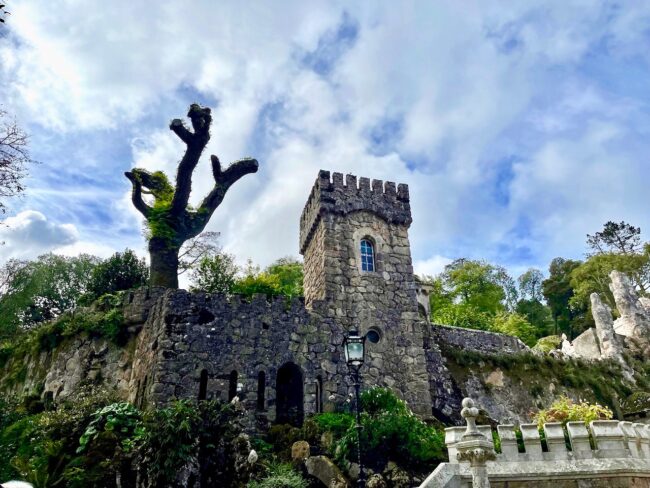
We entered near the old horse stables (if you have not pre-purchased a ticket, the ticket office is located here). This area is where the woman fell and died the previous day. Immediately we wound our way through the gorgeous grounds toward the Poço Iniciático (Initiatic or Initiation Well).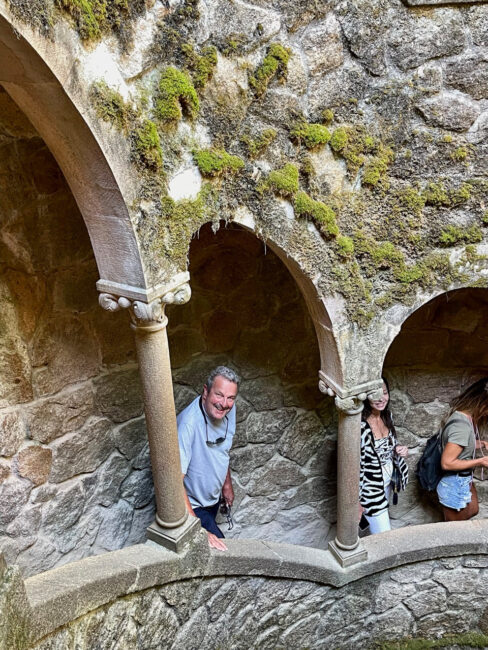
First, we’d see a few things along the way such as a couple of its Garden Follies. I had never heard that expression so had to look it up. “A garden folly is usually considered a building or structure that is designed for decoration with no other purpose than to add a touch of whimsy or extravagance.”
While Kim utilized one of the follies atop the Portal of Guardians, Mary looked like she was auditioning to be in the Follies. Sondheim would be proud.
There were no shortage of these stone follies on the Quinta property.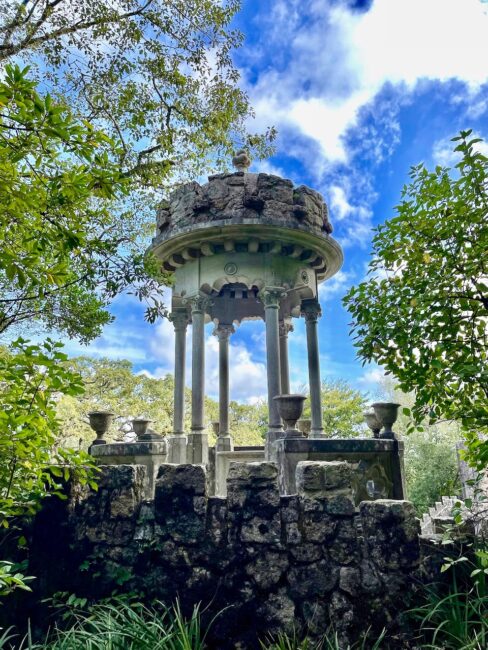
On the Terrace of the Celestial Worlds is the Ziggurat Tower. You can climb it, but at the moment we were looking for a place to walk down.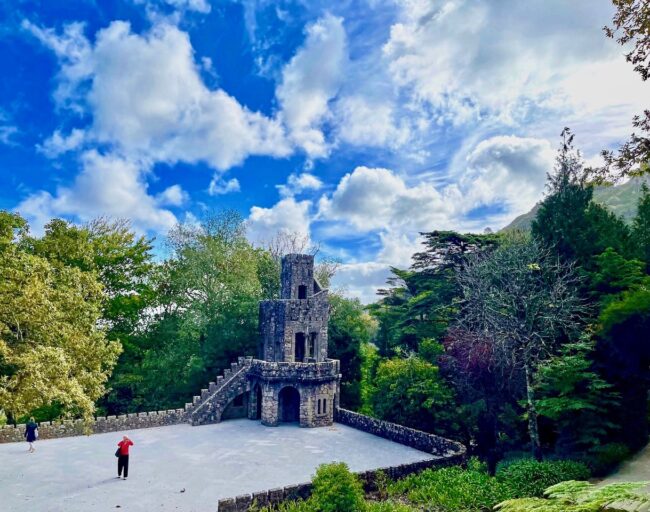
We arrived at the inverted folly, the Initiation Well. Isabel’s sage advice worked to perfection, only four people had arrived ahead of us.
We looked down the 88-foot well that was never intended to be a well. The winding staircase was ready to be conquered by the four of us. Isabel had told us that the well represented the nine circles of Dante’s Inferno (nine circles of Hell, Paradise and Purgatory). There are a number of other theories, as well. This would not have been a place Jimmy Stewart would have enjoyed in Vertigo. We started down.
… taking a few photos along the way.
When we reached the bottom, things started looking up. Way up!
At the bottom, we walked through a system of tunnels for 15 minutes.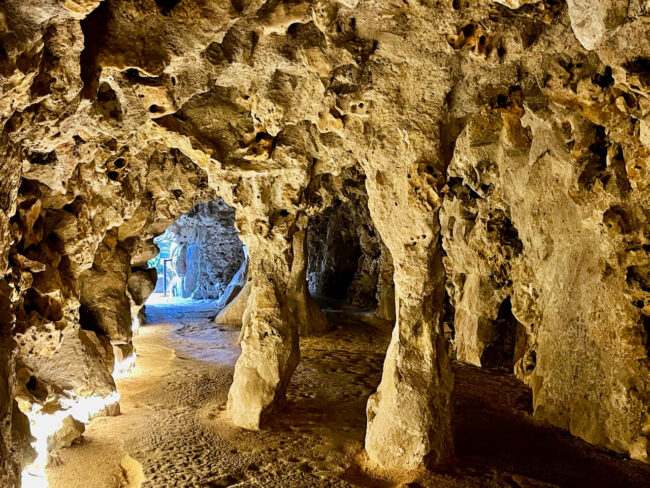
Kim and I navigated so perfectly that we said, “It’s so easy, cavemen can do it.” We did not, however, get 15 percent off of our car insurance at Geico.
Meanwhile, Tracy found Lago da Cascata (Waterfall Lake).
We wandered aimlessly through the gardens. This stone urn carved with a Satyr, a Ram and grapes caught our attention. Wine is a symbol of abundance and immortality. If that’s the case, I will live forever.
As did the Fonte da Abundância (Fountain of Abundance). I could not find an abundance of information, however, although I was told the Dolphins above the fountain represent fire and light, but barring a miracle, never the AFC playoffs.
We passed an ornate bench.
Lots of people were climbing the towers. Walking around you could see why so many people call Quinta da Regaleira a “magical place to visit.”
In the garden is the Capela da Santíssima Trindade (the Chapel of the Holy Trinity).
Similar to the palace, the chapel is constructed in a mixture of Gothic, Renaissance and Manueline styles, while other structures on the property are in a more simple medieval style.
There are fabulous frescoes on the walls, while the floor shows off Knights Templar crosses.
It was time to stop by the palace, starting in the Renaissance Room with a coffered ceiling in oak wood.. By now, there were lots of people in the palace, so our picture taking abilities were limited, plus the upper floors were not open.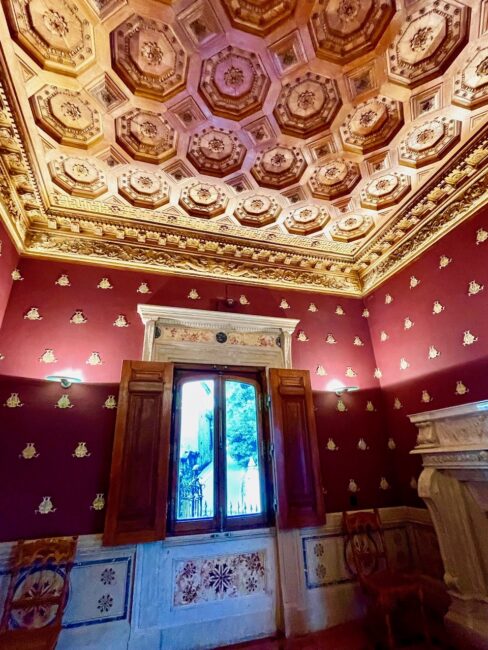
The woodwork and wood ceilings were amazingly detailed.
The palace had many decorative door knockers, too. Enter at your own risk.
Wall frescoes were spectacular in the Music Room (photo on left from internet)
The star of the show at Quinta da Regalia was not, in our opinion, the palace, but the garden itself.
We were there a little under two hours and could have stayed longer.
Quinta da Regaleira is a place you must visit while enjoying Sintra, in our opinion.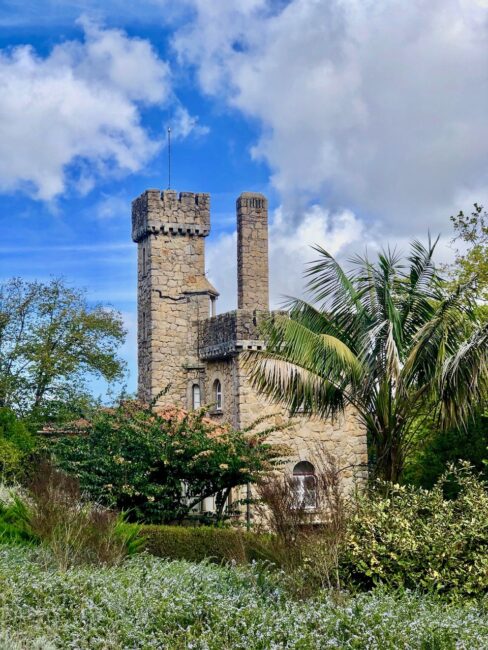
Somehow we kept passing by that Satyr bench.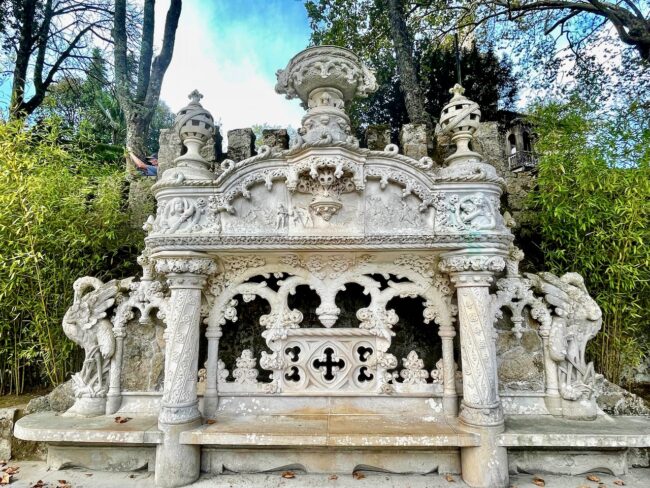
We got one last look at the Chapel Tower.
This fellow said he was the Mane attraction at the Quinta.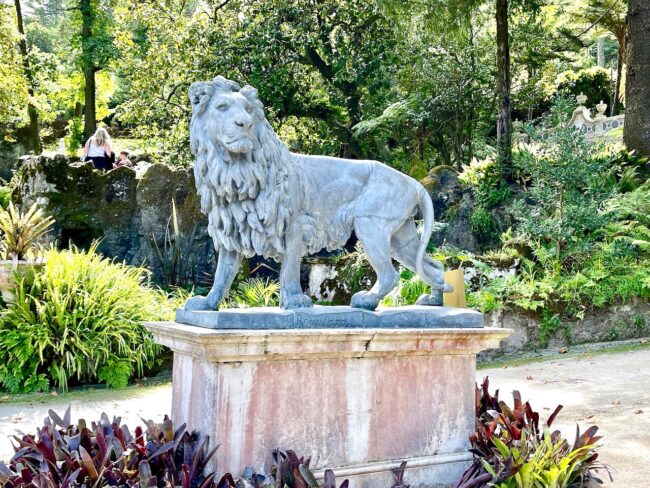
However, this guy barked his disagreement.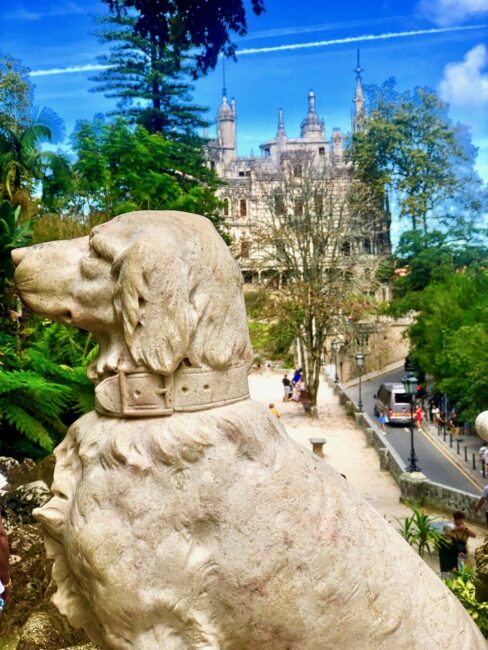
We needed to head back to town to have lunch before our expedition to the Palácio da Pena. Once again we passed by the Fonte dos Piscos (Pisces), which lies between the historic center of Sintra and Quinta da Regaleira. Back in the day, the overflow tank would have enabled farm animals to drink from here. The conical chimneys at the Palácio Nacional de Sintra gave us another greeting.
We took one more look, but Lord Byron was nowhere to be found, and although it was a long time until Christmas, chestnuts were roasting on an open fire. Jack Frost, however, was nowhere in sight.
Kim can always find one of these mysterious looking doorways.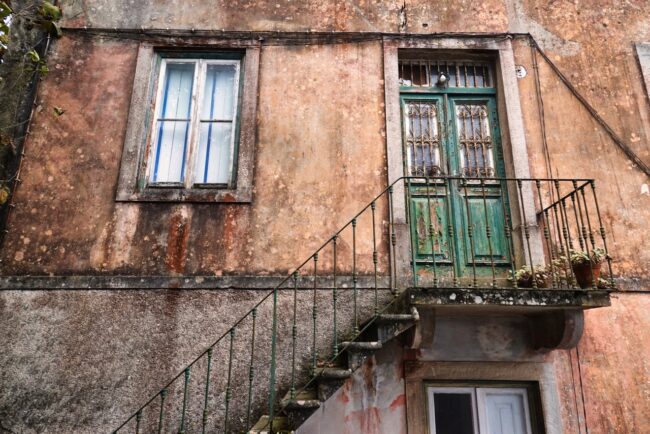
Nearly across the street, half way up the stairs we had traversed earlier that morning on the way to breakfast, is Larmanjat. It had recently opened, and there was only one sign for the restaurant, so we almost missed it, but were glad we didn’t. Everything from the chicken Caesar salad to the beef carpaccio salad to a couple of paninis were terrific, as was the pleasant service. I hope they’ve added more signage so people can discover this place.
Next stop … Palácio da Pena. We took the nearly 30-minute Uber ride (a little more than 6€ before overtipping) to the palace along the winding roads of Sintra, arriving a little before 2 p.m. We had 2:30 tickets for the palace that we had purchased before we left for Portugal. Lucky we did, because we might not have ever gotten in that day. It’s a fairly steep walk up to the palace from where the Uber drops you off that also takes approximately 20 – 30 minutes. There is a minibus that you can take from the ticket office, but the walk was pleasant and I needed to walk off that carpacccio.
The line for timed entry stretched a long way, so we got to take a good look at the Romanticist castle (the first one of its kind in Portugal) finished in 1854 by King-consort Ferdinand. 2:30 soon gave away to 3 as we made our way into the palace. As in most of Portugal, seemingly no one ever wore a mask. Hint: I would buy the 9:30 timed tickets to avoid the crowds.
The palace’s history dates back to the 12th-century when it served as a monastery. It was pretty much decimated in the Big Quake of 1775, but was purchased by King Ferdinand (Queen Maria’s husband). We entered the Manueline Cloister, filled with Hispano-Moresque tiles. The palace was selected as one of the “7 Wonders of Portugal” in 2007. Four small turtles hold up that big shell.
More colorful tiles greeted us in the first room, as did this decorative piece that kind of reminded me of Jimmy Durante on steroids.
The former refectory of the monks that lived on this property from the 12th-century was converted into a dining room, and still has its original 16th-century ceiling.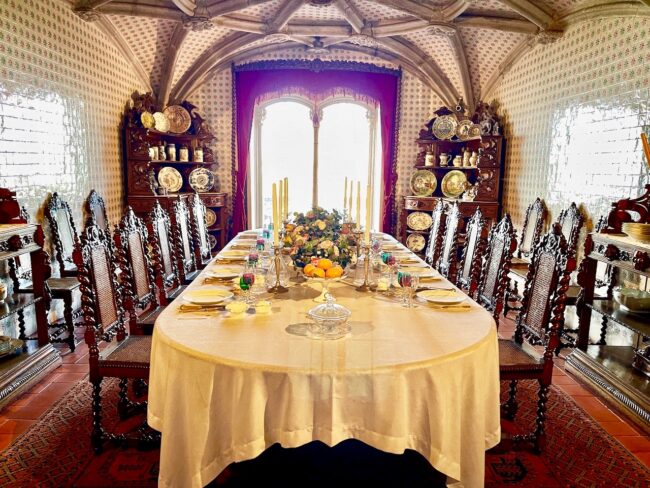
We hopped into the office of King Carlos I, who reigned as Portugal’s king from 1889 – 1908, when he and his son were assassinated (we had seen his tomb in Lisbon). It was originally a coffee room, which I assume Carlos had insufficient grounds to keep. Lots of nymphs on the wall, too. King Carlos purportedly painted them himself. Next to that are his Chambers. Could that bed be any shorter?
We continued our self-guided tour (along with thousands of new friends), and saw the cloister from up top.
We also caught a glimpse of the clock tower.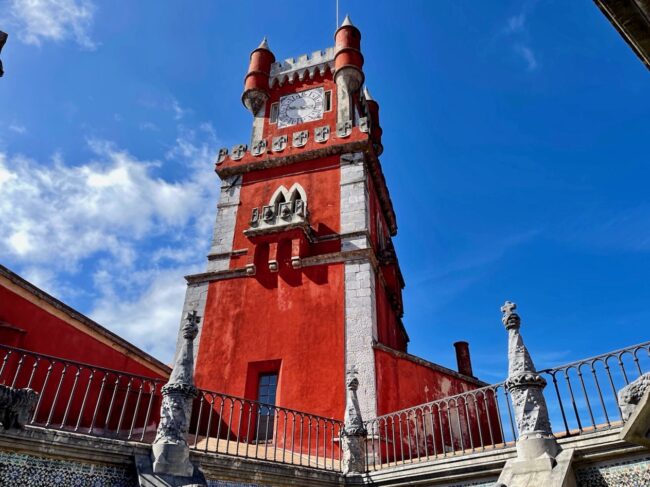
The Bedroom of the Lady In Waiting leads to …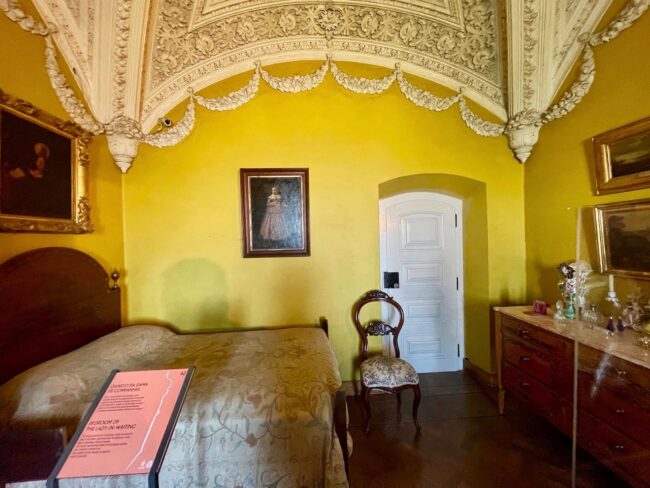
… the Bedroom of Ferdinand II (and eventually Queen Amélia). The bed is made of rosewood.
It is covered in a decorative Neo-Moorish style.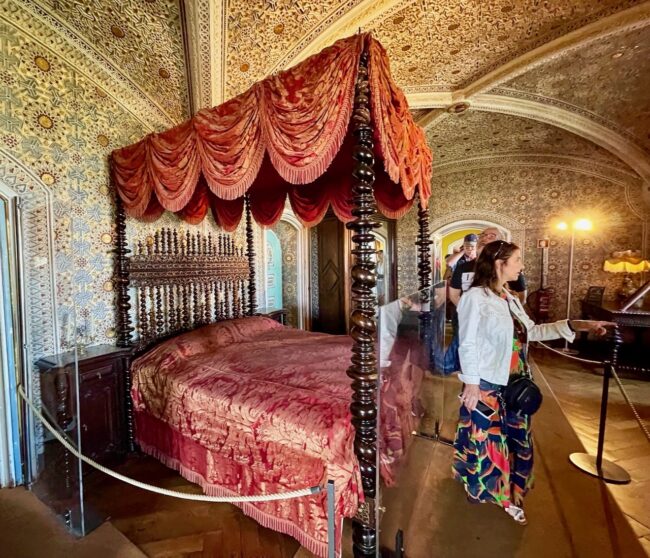
The tile work in this room is definitely the star.
Queen Amélia hosted her guests in the Tea Room, while the photo on the right is from her office.
Although this is technically the Telephone Room, which still displays the original switchboard, it’s the green cabinet that housed the switchboard that everyone is interested in.
One of the nicer sitting rooms we’ve visited in our travels is the Moorish one here. It was commissioned by Ferdinand II in 1854.
I believe we can all figure out why this is called The Green Room. King Pedro V is the statue next to the wall.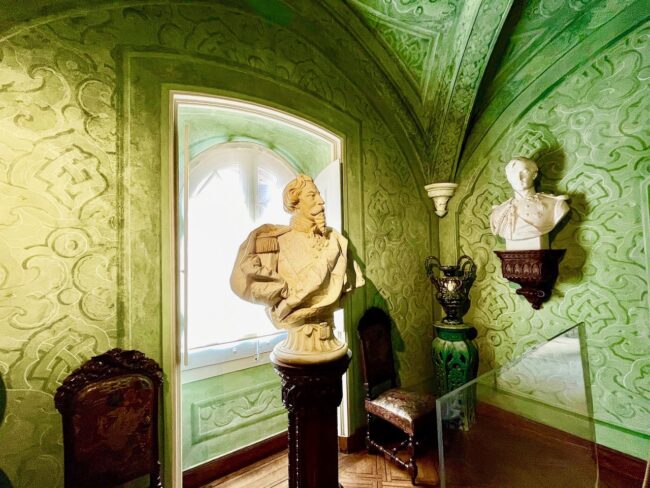
One of the last “old palace” rooms is The Sacristy, the room used for the preparation of religious ceremonies.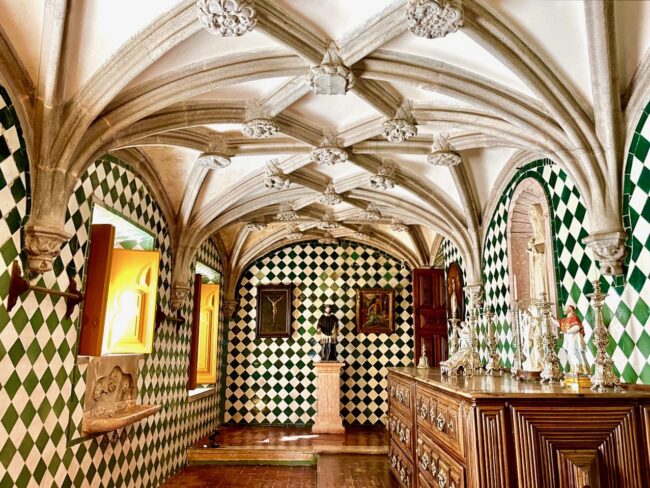
Kings and queens need a place to party, and at Pena Palace it was here in the Great Hall.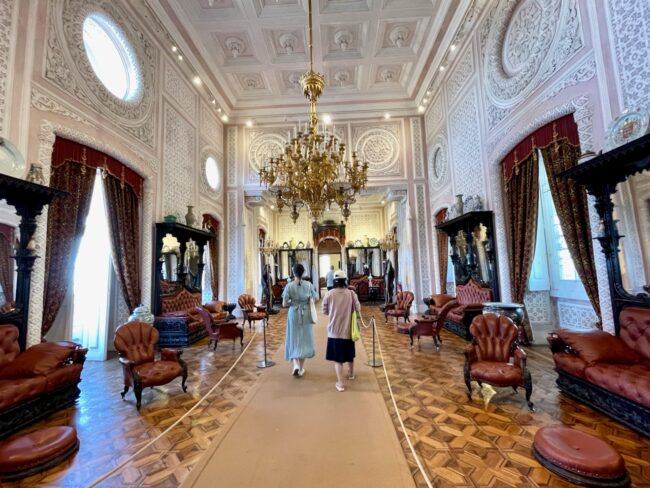
The chandelier and furniture wrte commissioned in 1866, while a Male Moorish statues holds up a Candelabra. Liberace would have loved that.
We moved our butts quickly walked through the Smoking Room.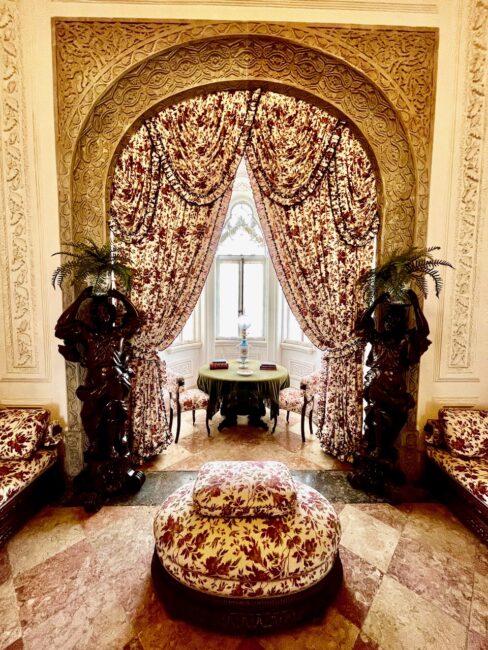
The Stag Room was supposed to be utilized as the dining room for the new palace. Stags and a column that looks like a tree trunk highlight this unfinished room.
As is the case with most palaces, the last room to visit was the Kitchen. Fortunately someone had cleaned all the pots so we were free to go.
It was time for some fresh air, and looking down the lines to get in the palace had not diminished one bit.
These vibrant colors make the palace recognizable from so many vantage points in Sintra.
Tracy found The Chapel. By now, it was so windy up here, 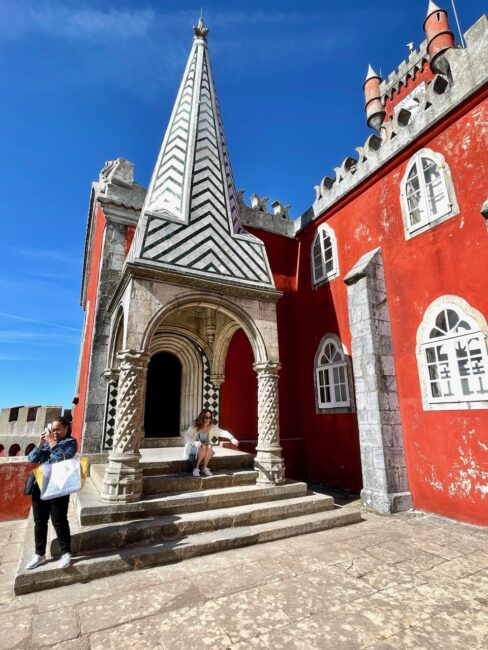
The incredible Altarpiece in alabaster and a type of limestone dates all the way back to the 1520s and was commissioned by João III, son of Manuel I, the founder of the convent.
It was a quick, but beautiful stop.
Also striking were some of the views afforded from the palace.
It was nice to be out from mass of people, too.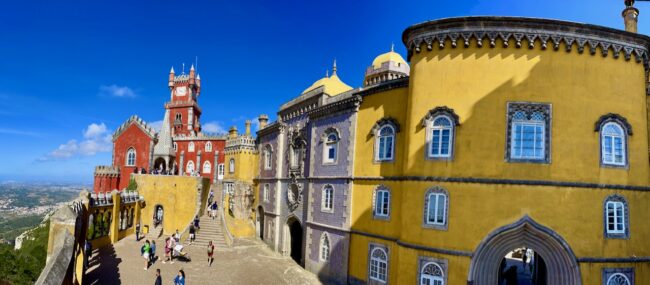
A romantic selfie after walking the parapet is a must for any young couple.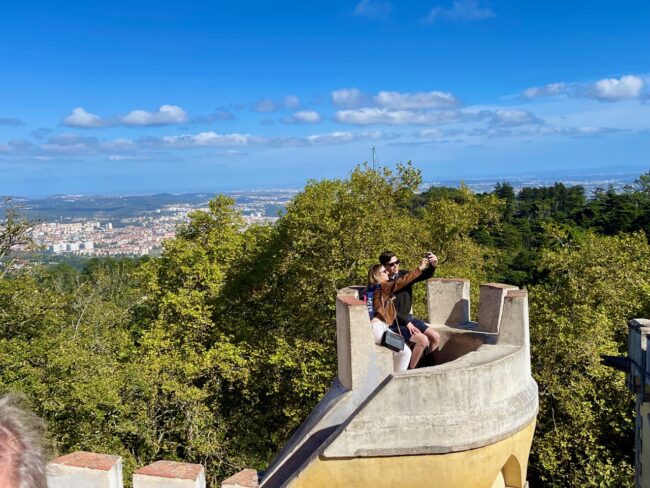
Yes, there are lots of people, but if you get the chance I’d go (but be sure to get those online tickets during heavy tourist season).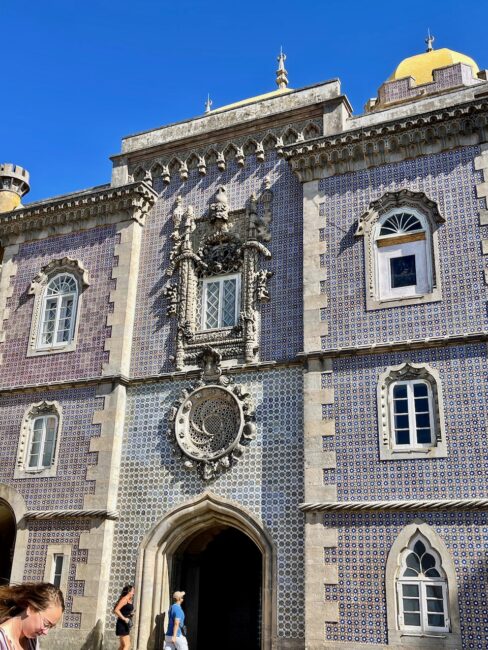
No visit to a palace is really complete until you see a half man, half fish, but that’s exactly what you get at the Triton Terrace near the Sentry Walk.
It looked he was saying, “Maybe sell less a few less tickets.”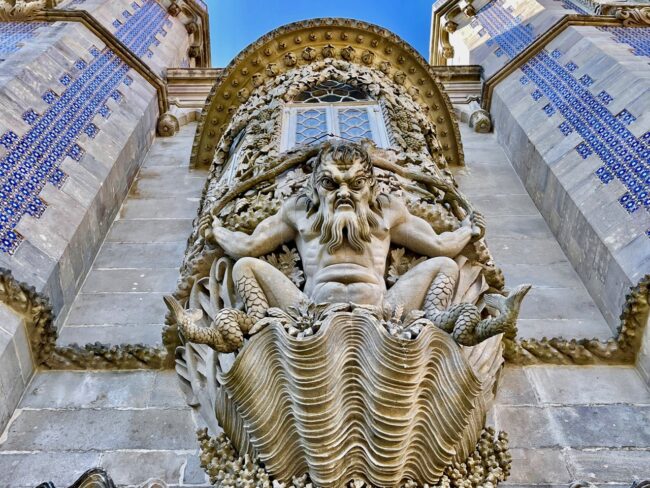
Some more stonework, and it was time to head down from where we started.
But, not before we took one look up.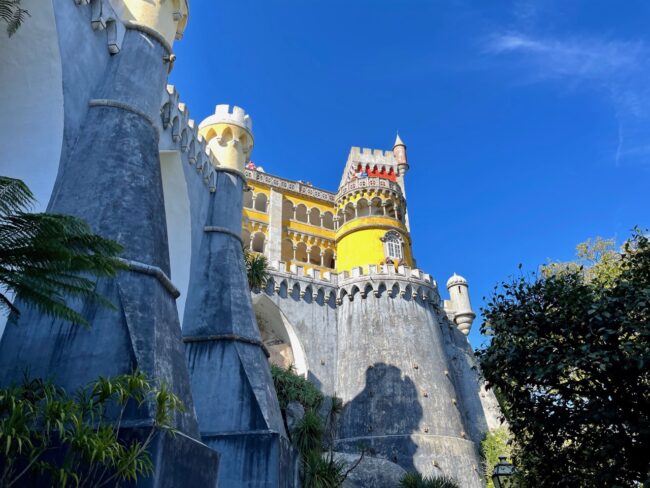
Pena has a large park to explore, but I had stupidly booked tickets at prime time, so we decided to head back to the hotel where we would have a little time to freshen up for dinner. I told the group, “We’ll just call an Uber and be on our way.” Unfortunately so had about 75 others, and even though there’s a lot of Ubers in Sintra, by using my splendid San Diego State Math 3 skills, I quickly calculated there were not enough Ubers to pick us up until November. Since it was September, that was a dilemma.
We contemplated our situation for a minute and thought about taking a tuk tuk down the steep and winding road, however Kim and Mary realized they wanted to see their grandchildren again, while I was still hoping the Padres might make the World Series. Then fate (and a savvy entrepreneur) suddenly stepped into our lives. He said, “Hey stupid tourist who thought you could catch an Uber up here with these massive crowds (not his exact words), I have a friend who can take the four of you back to Sintra for €20.”
Thinking I was back in the U.S., my first thought was, “What if he robs us and takes us to Cabo da Roca and throws us off a cliff.” Then I remembered we were in Portugal where everyone had been nice, and for €10 per couple it was definitely worth the money at this moment. The guy was great, and with his fast driving we made it down in a much shorter time than our way up. It was so quick, I kept checking to see if he had any brakes in the car.
Dinner on this Saturday night would now vault into #1 on the trip. Venturing the opposite direction from the crowds in the historic center, it was less than a ten minute walk to a charming neighborhood spot, Taberna Criativa. Although Mary seemed to feign she didn’t know us, we walked inside.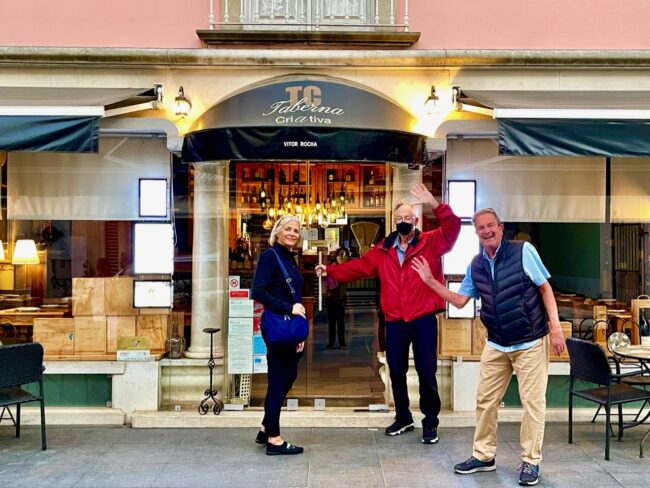
The restaurant was charming, and they seemed to have ample libations at hand.
Our server (the only server by the way in this tiny restaurant) was terrific, and all the dishes came out were on the mark and beyond. Tracy started with a “Wow” Veal Carpaccio on a bed of polenta with grilled veggies.
Mary loved her fish on pasta with curry. No fish are safe in a country Mary visits.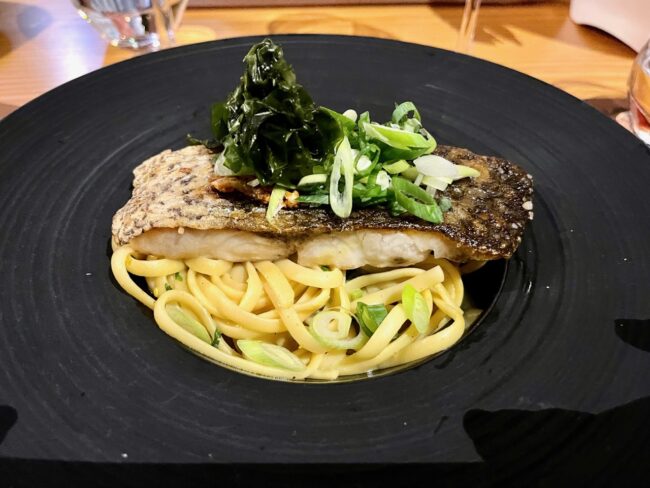
Meanwhile Kim and I shared a “Steak For Two,” served with smashed potatoes and sautéed spinach.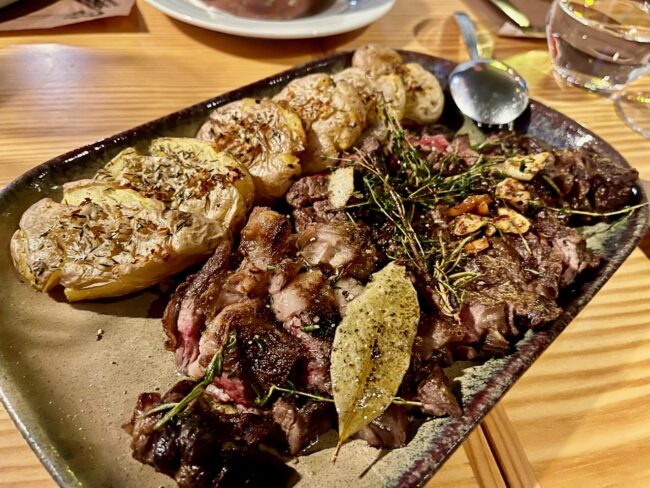
My dessert was insanely delicious. The Folhado de ma was some sort of puff pastry, with apples, cream, and vanilla topped with ice cream. They had to drag me out kicking and screaming because I easily could have eaten three.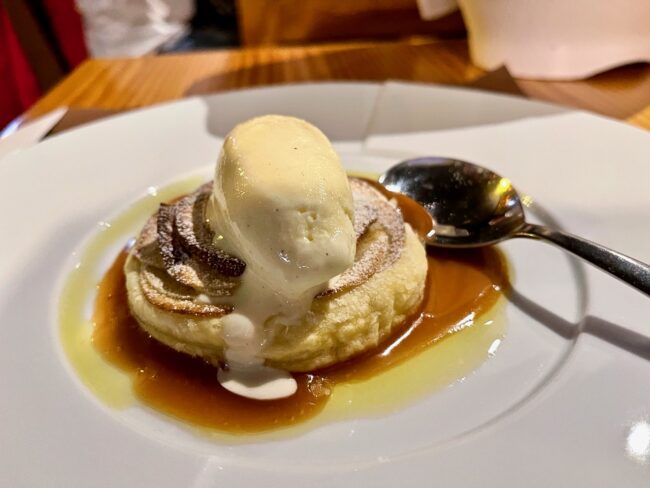
Tomorrow, on our last day in Sintra we’d hit one more big ticket site, the magical and mystical Monserrate.
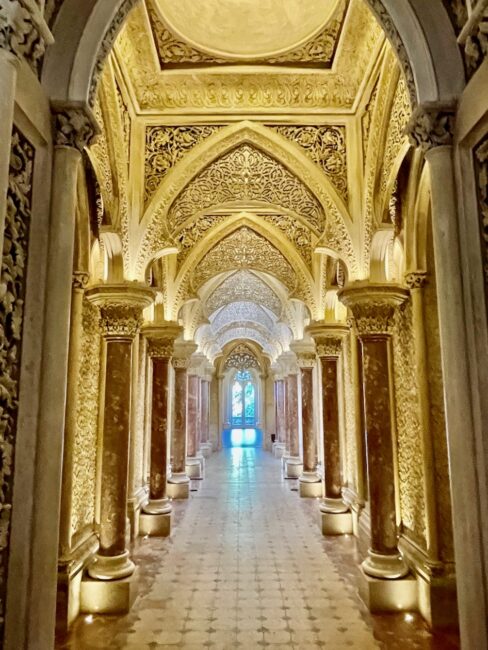 Not to spoil the Sintra ending, but it and Quinta da Regaleira were our two favorite Sintra palaces.
Not to spoil the Sintra ending, but it and Quinta da Regaleira were our two favorite Sintra palaces.
Afterward, I had wanted to drive out to the most westerly point of mainland Europe, but something got lost in translation with our Uber driver, so we eventually returned to Sintra. Kim, Mary and I would get the “News” at a museum in town, while Tracy wandered around Sintra.
Kim, Tracy and I would then Uber to the Lisbon Airport to pick up our rental car that we would be using for the next nine days. Finally, we would once again luck out on a fantastic dinner.
By the way, during Tracy’s afternoon stroll though Sintra, she would make it back near the Palácio Nacional de Sintra, where once again she would witness the aftermath of a terrible tumble.
Chapter Nine: Magical Monserrate
Day Nine: The Early Birds, A Lovely Walk, Stunning Palace, Less Is Moor, The First Lawn Planted In Portugal, Here Is The News, Somebody Please Call An Ambulance, What Color Is Diesel?, Toll Unit and the “Real” Deal

